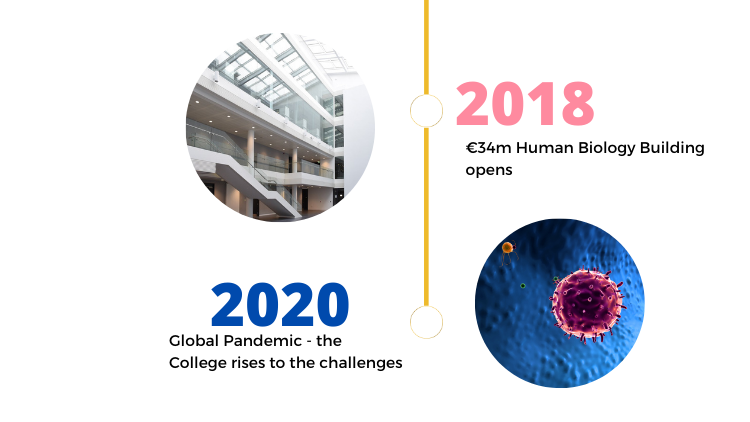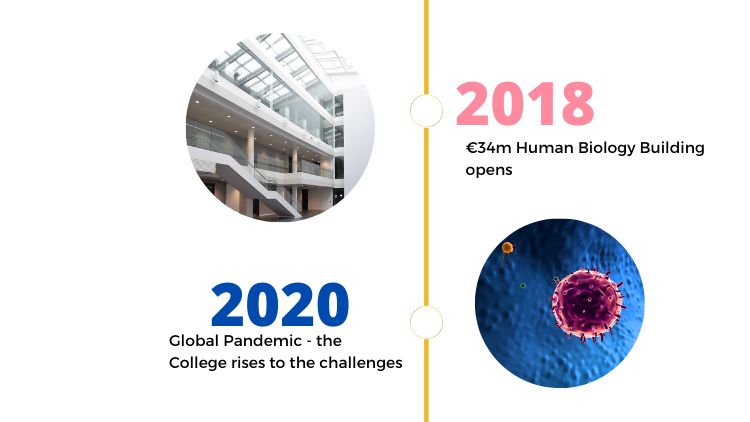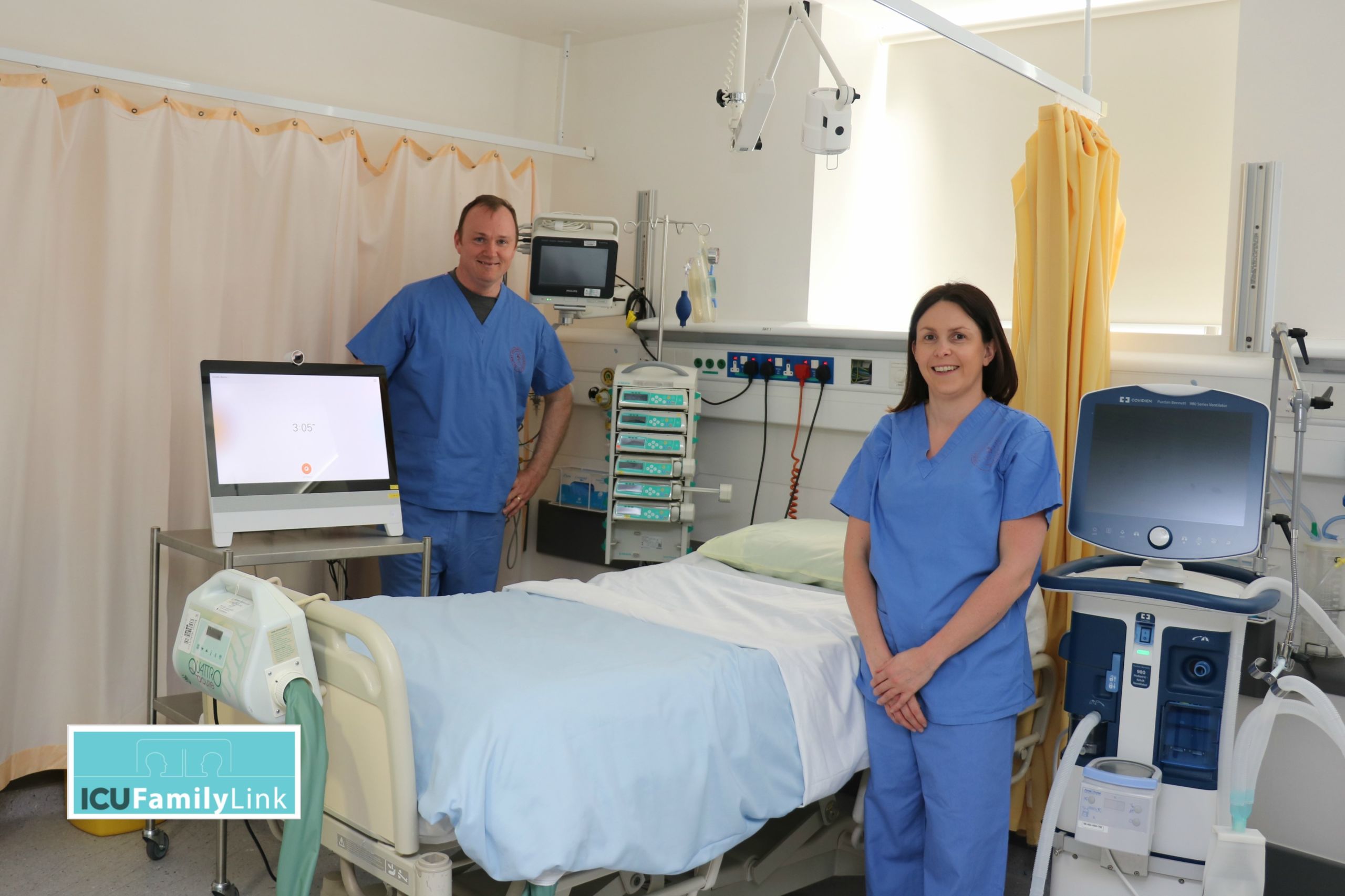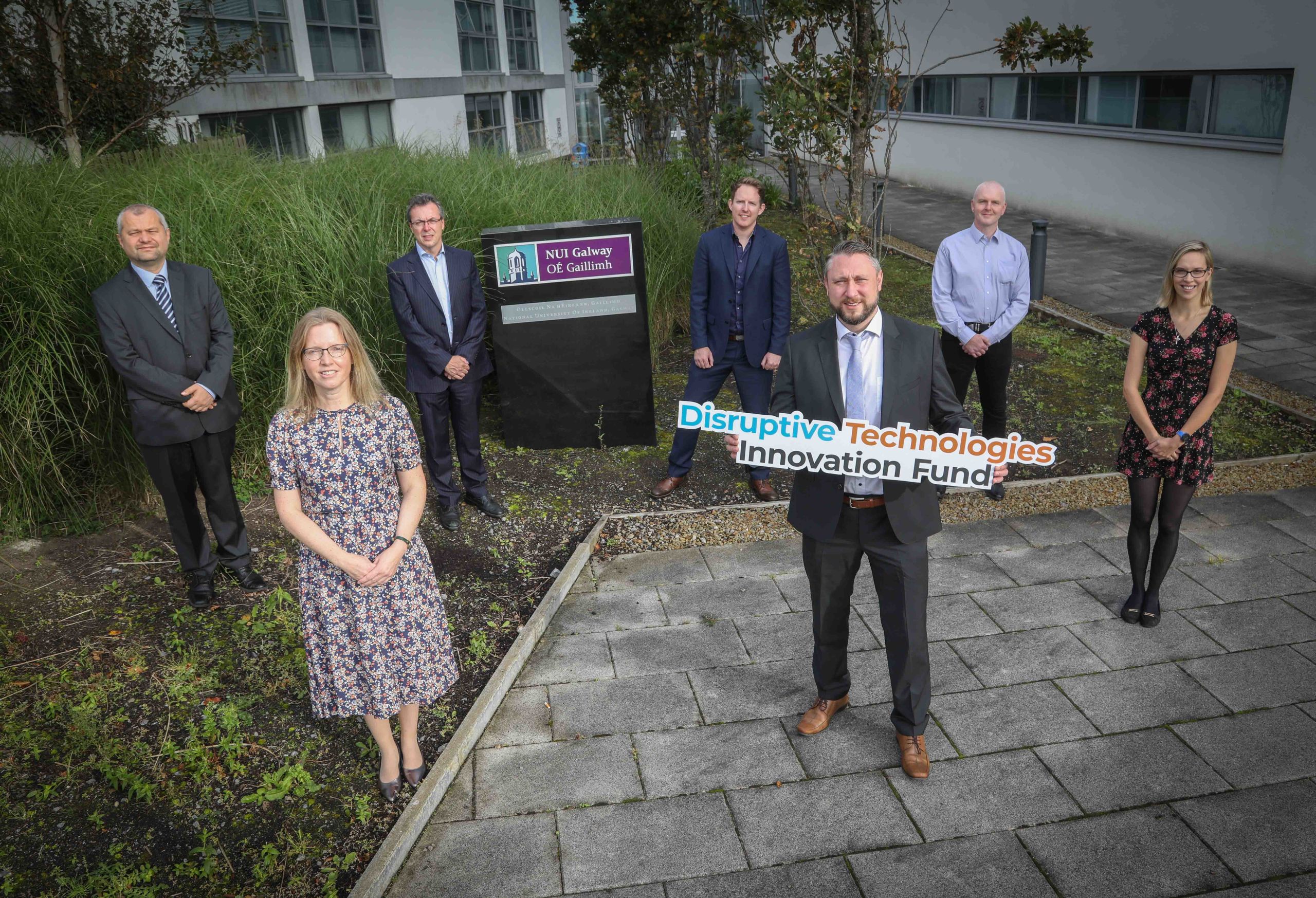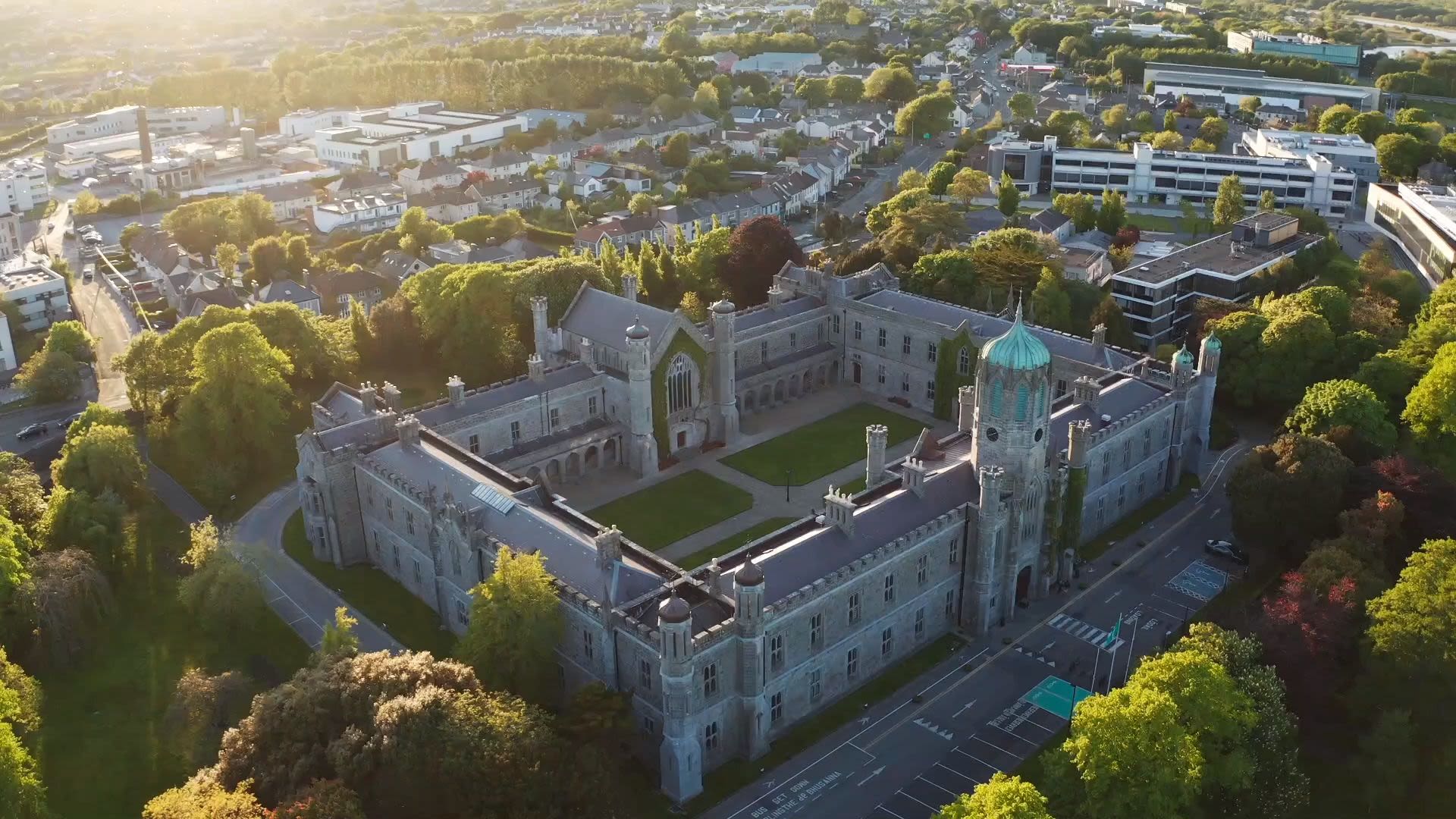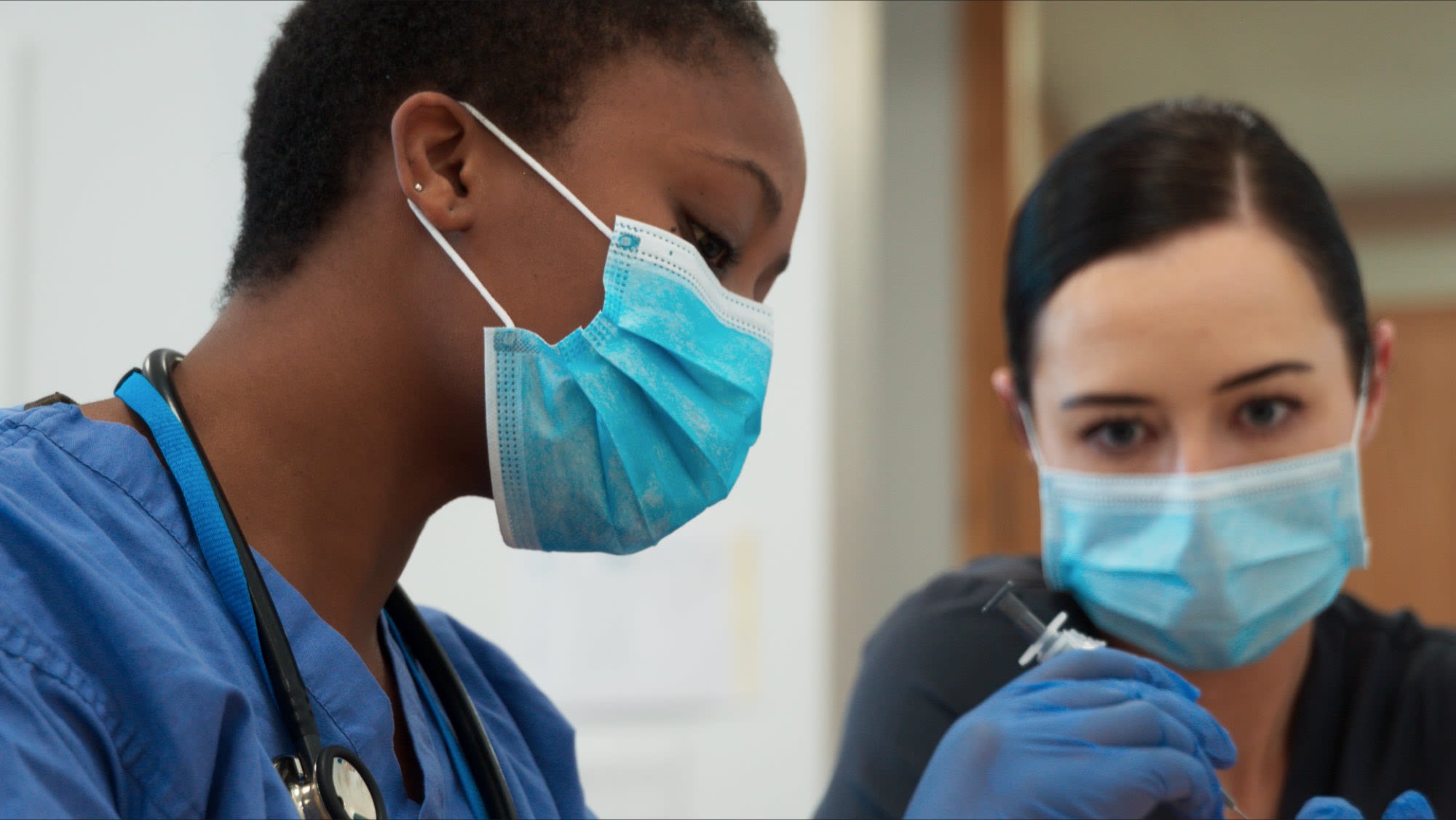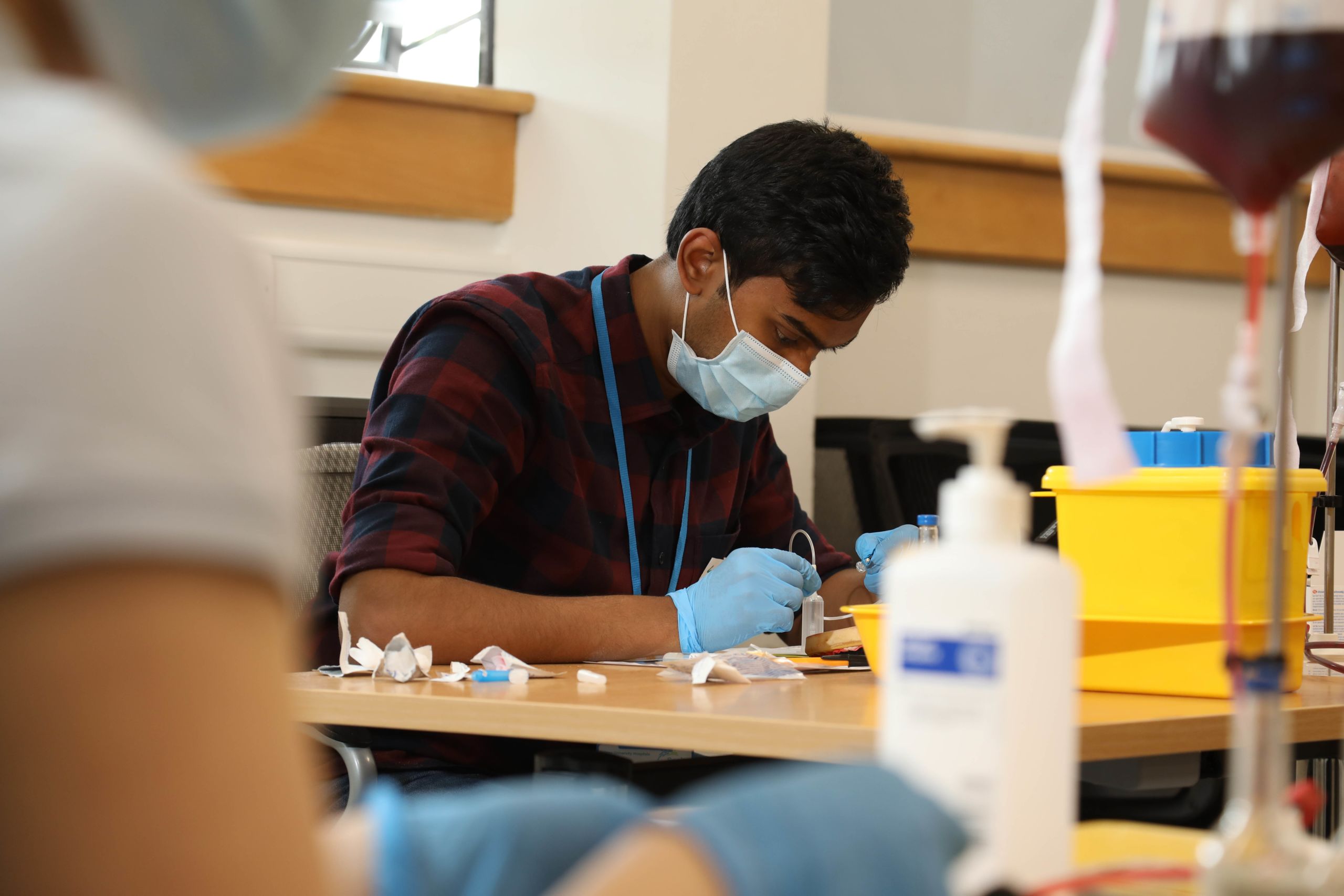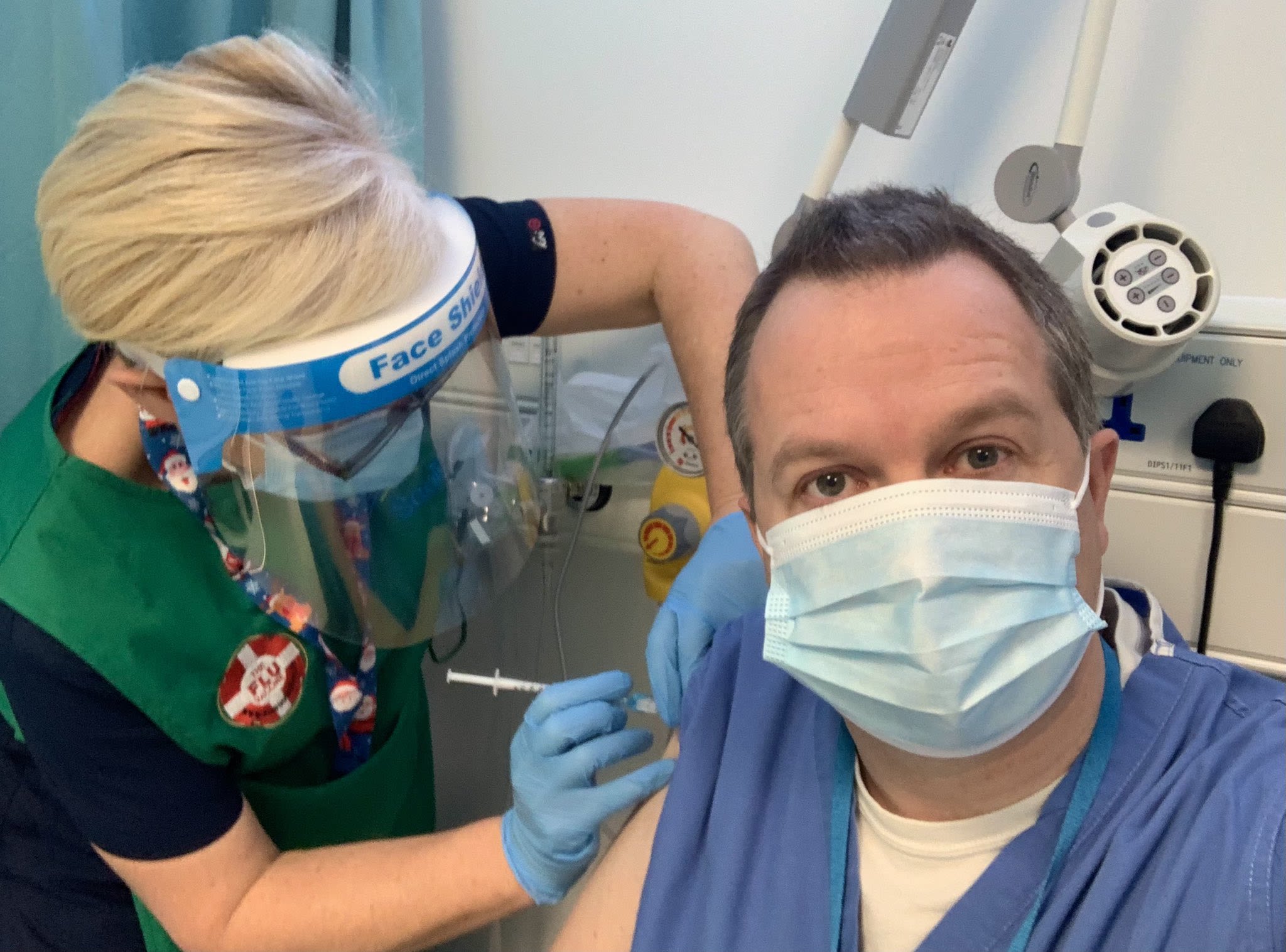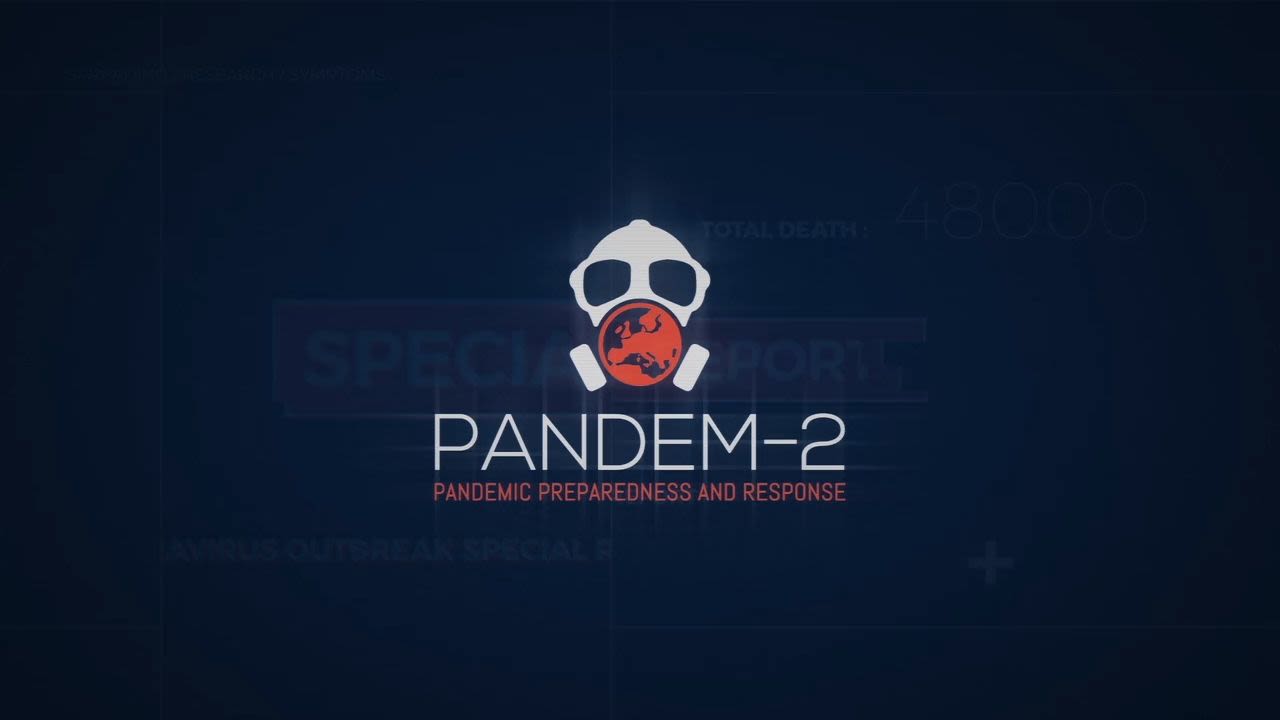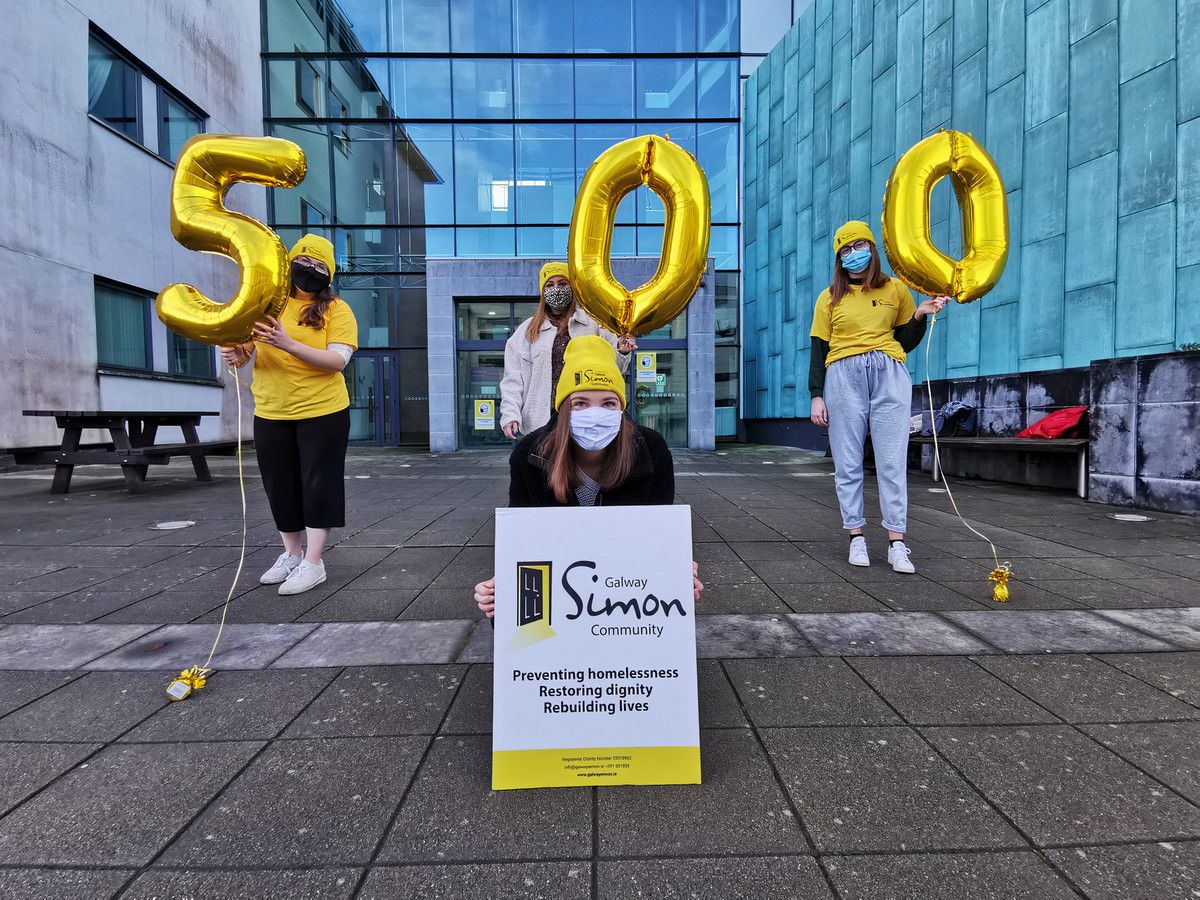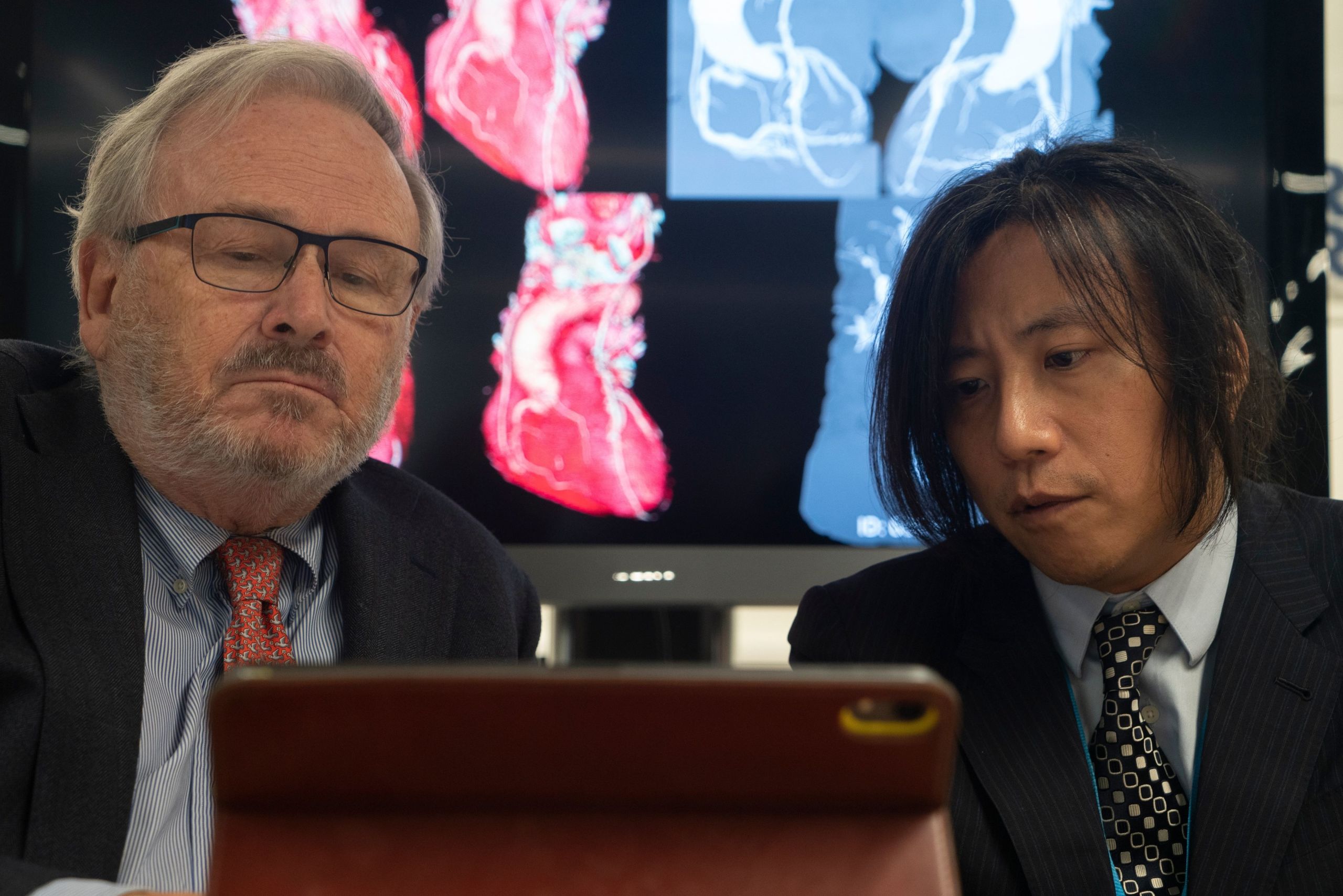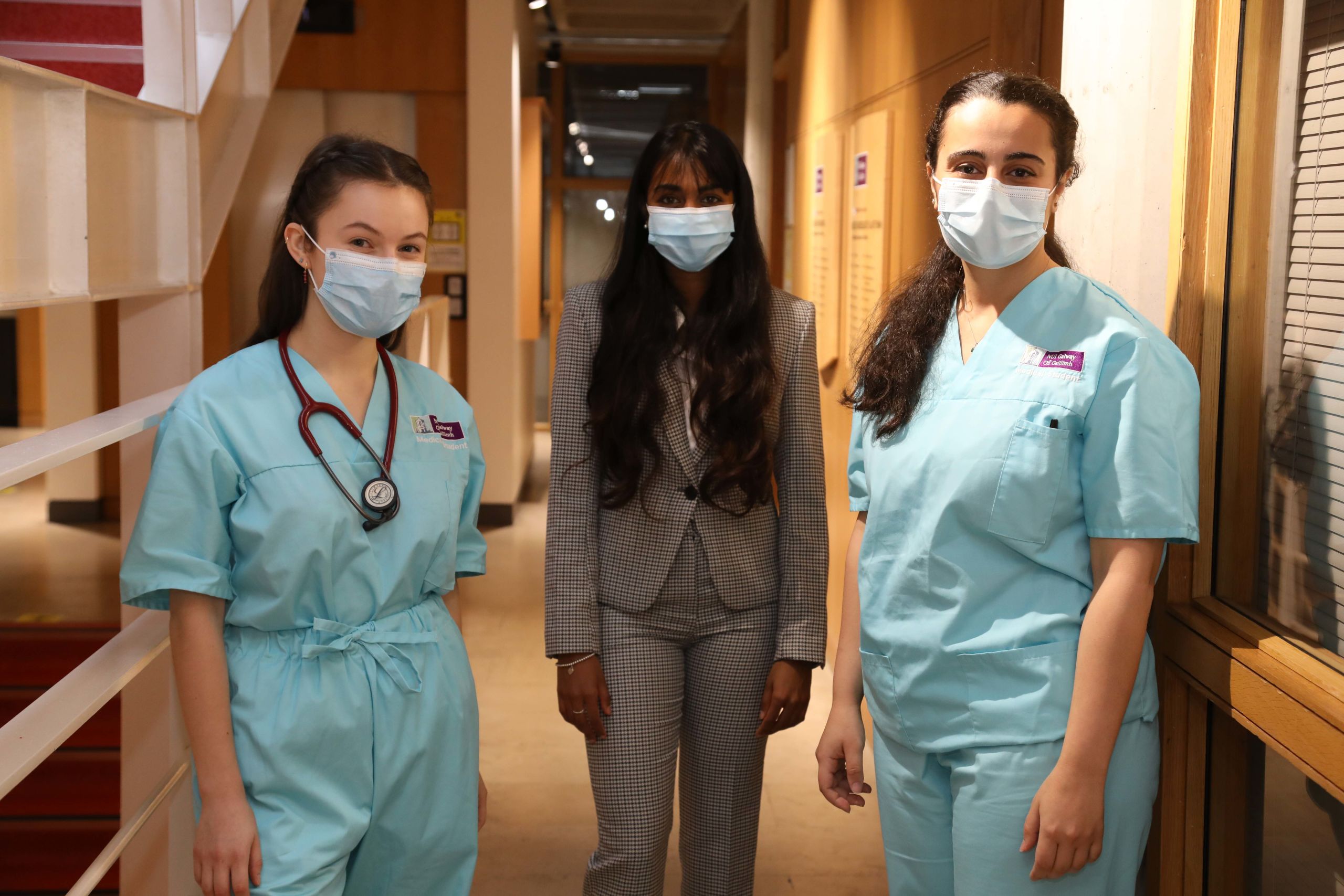A History of the College of Medicine, Nursing & Health Sciences at NUI Galway

Medicine at Queen's College Galway 1849-1924
With the Royal Charter to establish 'Provincial Colleges' in Ireland came the establishment of Queen's University Galway. From the offset, Anatomy and Physiology were taught.
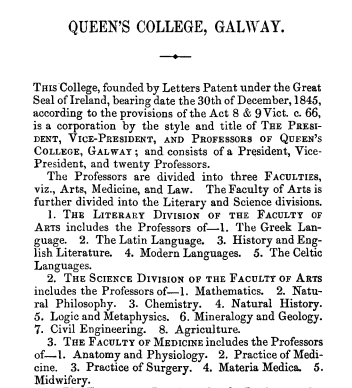
"During his time in Galway from 1849 to 1863 Professor Charles Croker King, the Foundation Professor of Anatomy and Physiology, organised an excellent Anatomy Department which included a useful Museum of Human and Comparative Anatomy. The emphasis in his teaching was on surgical anatomy and he made special arrangements with the Surgeon in the County Infirmary to enable him to conduct bedside teaching in surgery and demonstrate operative surgery there." (From Queens College Galway to National University, Tadhg Foley"
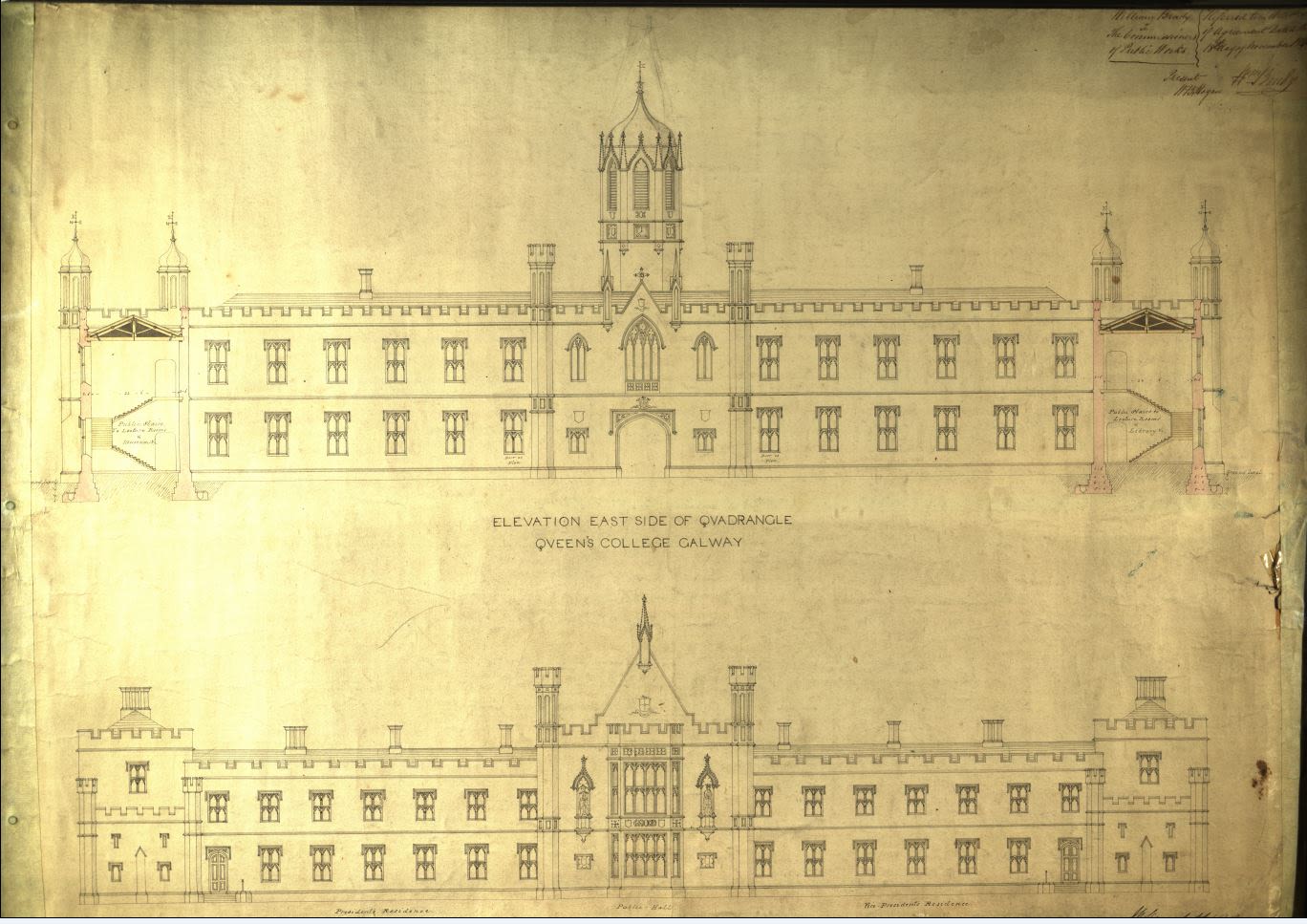
In 1859 the Montgomery Collection was purchased, containing over 600 specimens relating to the pathology, anatomy and physiology of the reproduction system.
In 1874 Sir Peter Freyer graduated with two gold medals. He is later credited worldwide for pioneering the operation now know as a prostatectomy.
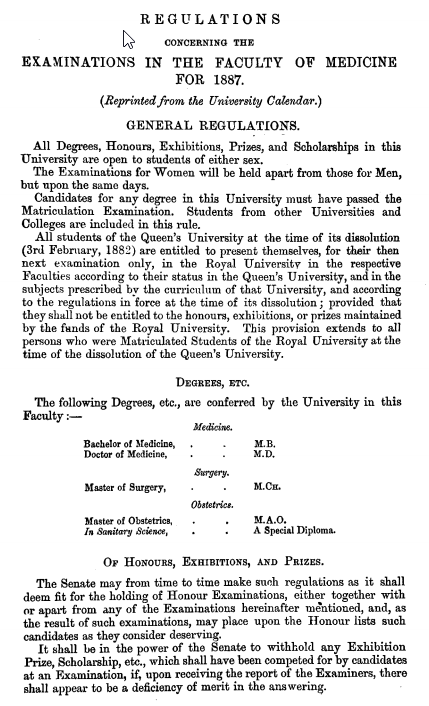
In 1892 the Galway Hospitals Act gave access to the local hospitals for the purposes of clinical education.
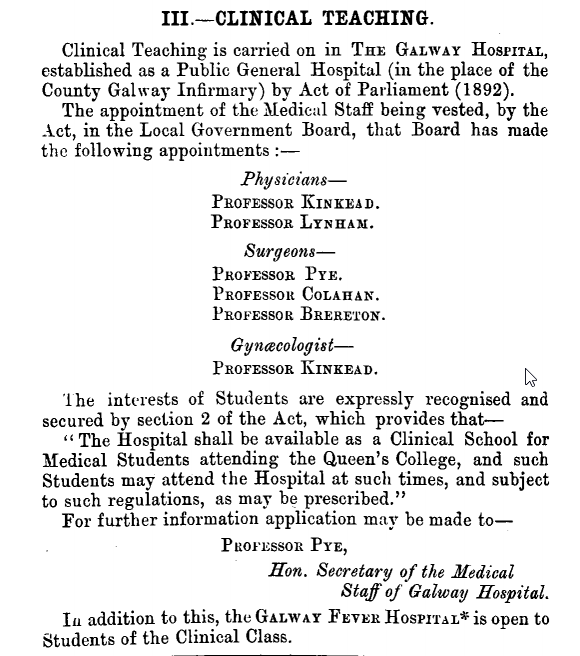
Reproduced from 1907-1908 University Calendar, courtesy of James Hardiman Library, NUI Galway.
Reproduced from 1907-1908 University Calendar, courtesy of James Hardiman Library, NUI Galway.
In 1902 female students were admitted for the first time.
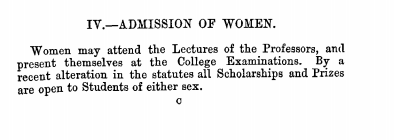
In 1908 the University becomes known as University College Galway and in 1909, 37 medical students enrolled, the largest intake up to that time.
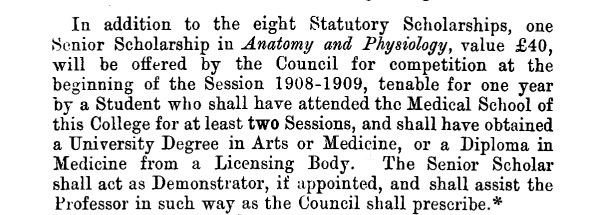
Reproduced from 1908-1909 University Calendar, courtesy of James Hadiman Library, NUI Galway.
Reproduced from 1908-1909 University Calendar, courtesy of James Hadiman Library, NUI Galway.
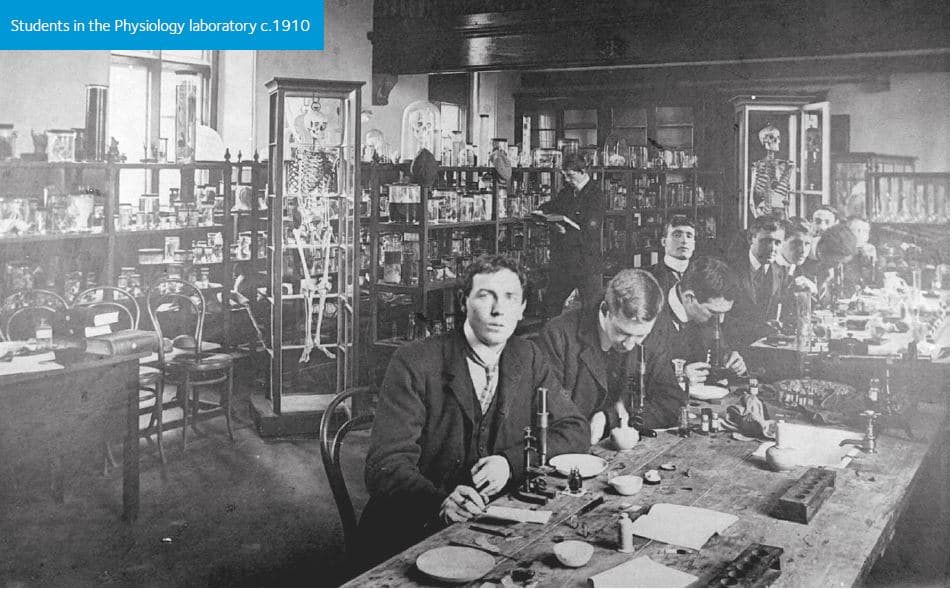
Students in the Physiology Lab, c.1910
Students in the Physiology Lab, c.1910

Reproduced from 1918-19 University Calendar, courtesy of James Hardiman Library, NUI Galway
Reproduced from 1918-19 University Calendar, courtesy of James Hardiman Library, NUI Galway
For the first time designated research facilities were incorporated into a new department"
In 1914 the Pathology department was transferred to the new Civil Engineering building. This Department was situated on the top floor of the new building, and consisted of three rooms- a museum, a students' laboratory, and a research laboratory. The University Calendar recorded that the "whole has just been fitted up in the most up-to-date manner".
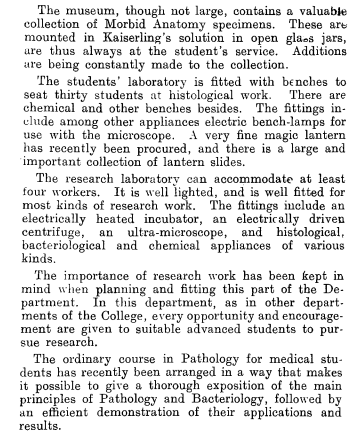
Reproduced from 1923-24 University Calendar, courtesy of James Hardiman Library, NUI Galway
Reproduced from 1923-24 University Calendar, courtesy of James Hardiman Library, NUI Galway
By 1916 there were 102 medical students enrolled.
In 1924 the Commissioning of the Central Hospital provided students with residential hospital experience, in addition to the required attendance in Dublin.
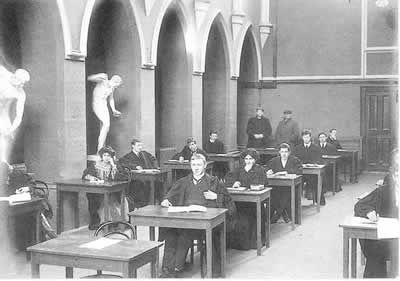
Examinations in the Aula Maxima.
Examinations in the Aula Maxima.
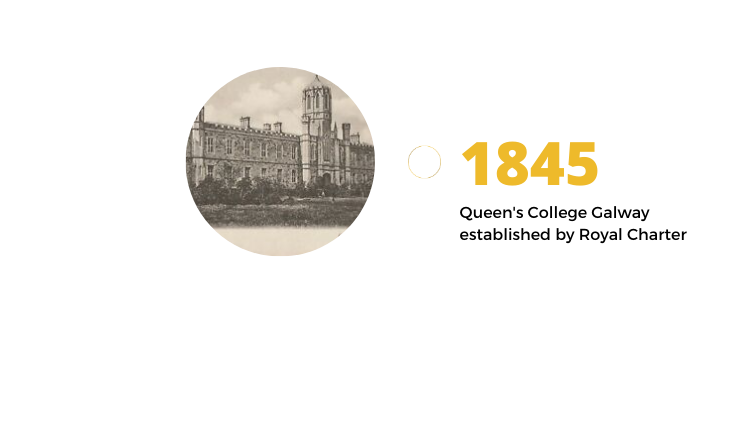
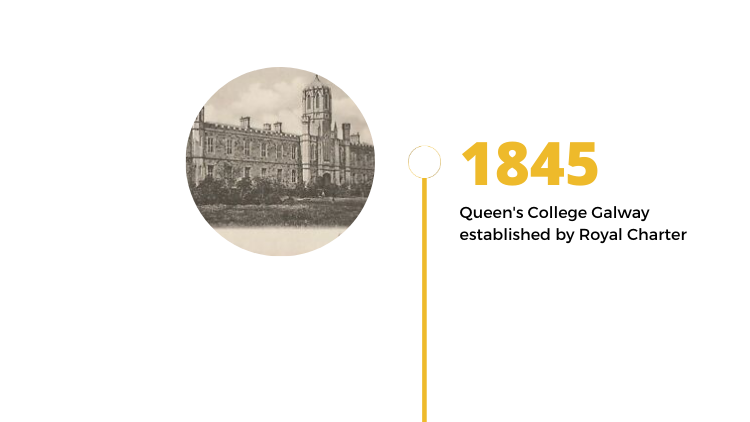
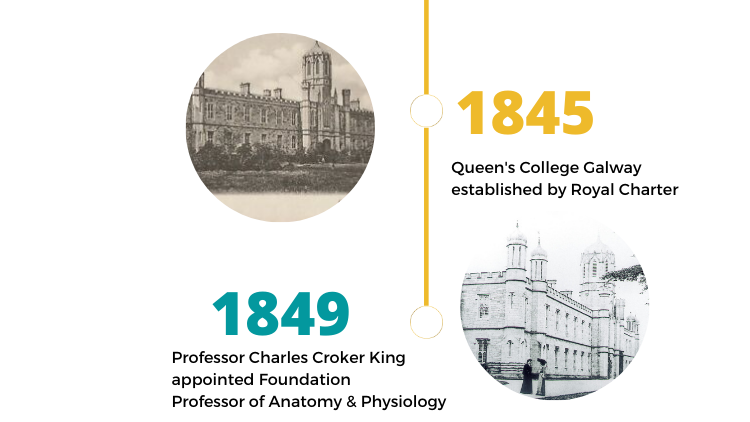
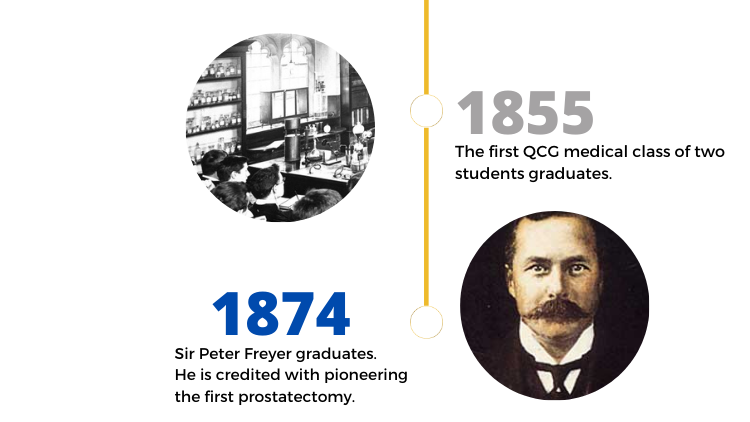
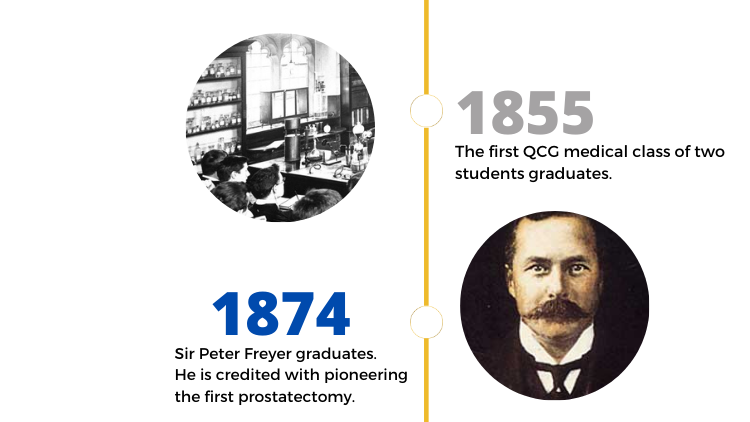

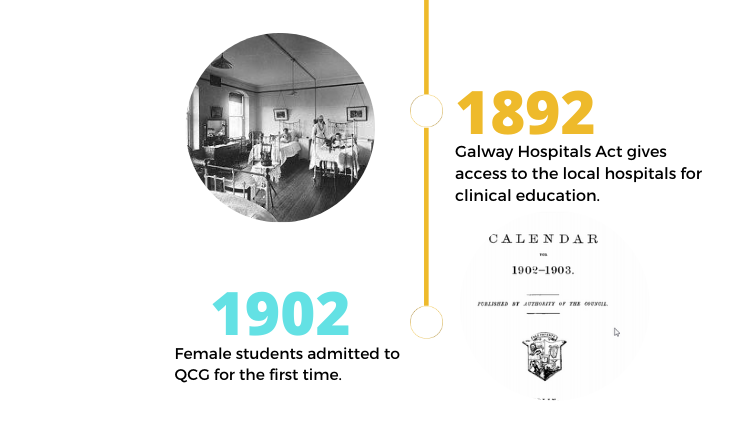
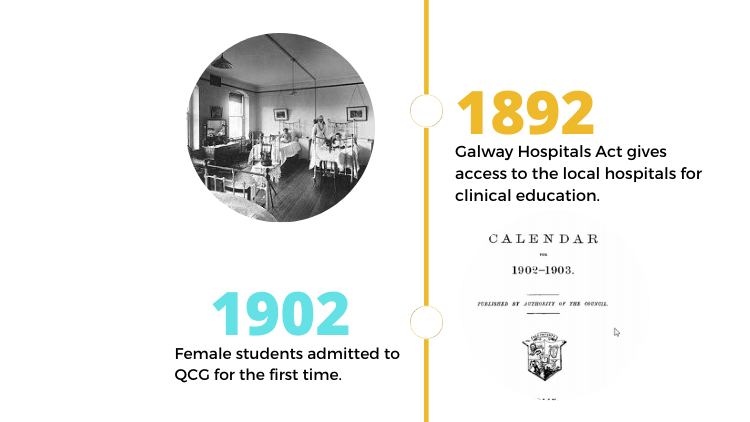
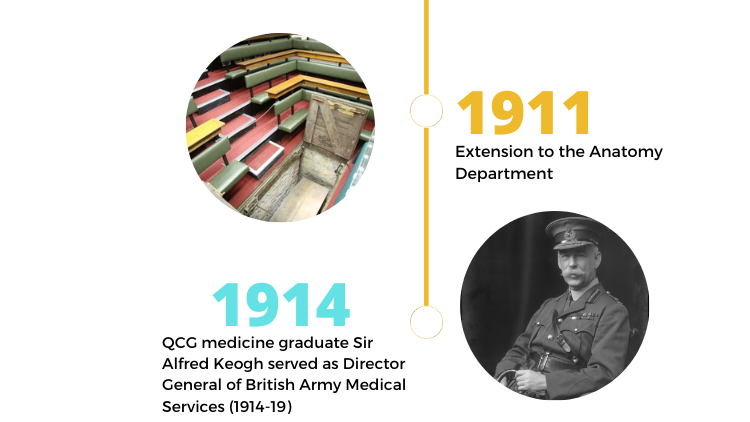
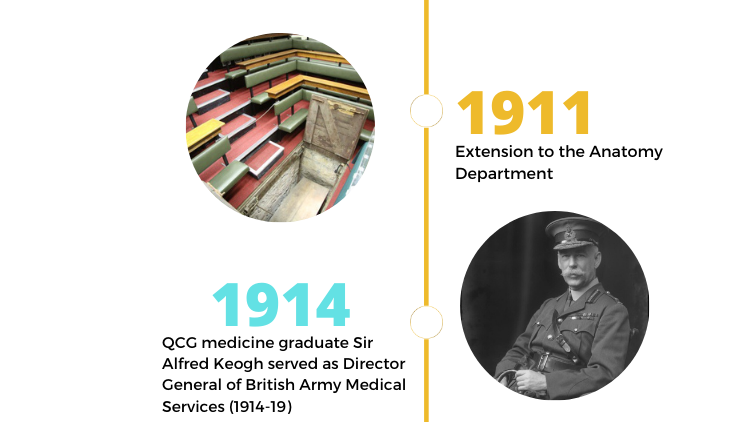
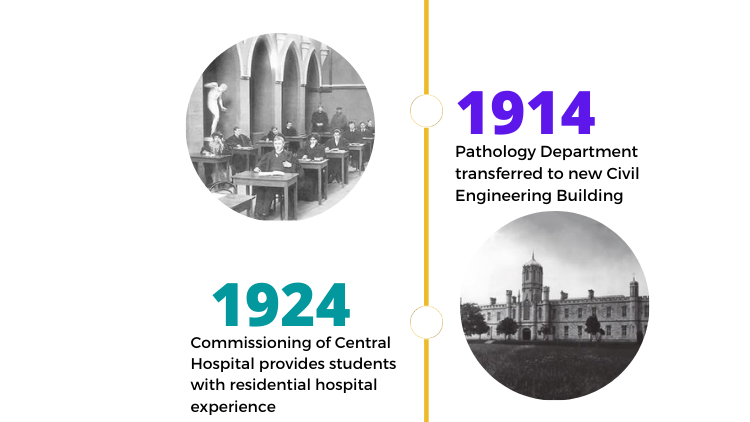
In 1946 the closure of the Polish Medical School in Edinburgh resulted in an increased intake of Polish students.
In 1948 a regional laboratory was developed to combine service and academic facilities on the grounds of the proposed Regional Hospital.
In 1953 the Health Act formalises the relationship between the Medical School and the Regional Hospital.
In 1955 the American Medical Association visited the College and this gives added stimulus and direction to the changes necessary to meet rapidly evolving trends in medical education.
In 1959 the first appointment was made in Medical Therapeutics, Paediatrics and Preventive Medicine. Today NUI Galway has a unique partnership with National Institute for Prevention and Cardiovascular Health to advance research and education in preventive medicine, offering a portfolio of programmes unique in the world.
1960 saw the establishment of the departments of Experimental Medicine and Practice Pharmacology.
In 1964 a Clinical Science building on the grounds of the Regional Hospital is first proposed.
From the 1970s a succession of visionary Deans oversaw the development of a Medical School into the College of Medicine, Nursing and Health Sciences.
Deans 1970-1988:
1970-1973- Professor Brian McNicoll
1973-1979 Professor Eamon O'Dwyer
1979-1982 Professor Ciarán F. McCarthy
1982-1988 Professor John Flynn
In 1989 a special arrangement with the Malaysian government was initiated, establishing sponsored fees of enrolled Malaysian students.
The Discipline of Health Promotion was established in 1990 with support from the Department of Health- this multidisciplinary academic centre is the only one of its kind in Ireland.
In 1992 the Clinical Science Institute was opened by the then Taoiseach of Ireland, Mr. Albert Reynolds. This building was constructed and designed to house the teaching and research facilities of the School of Medicine.
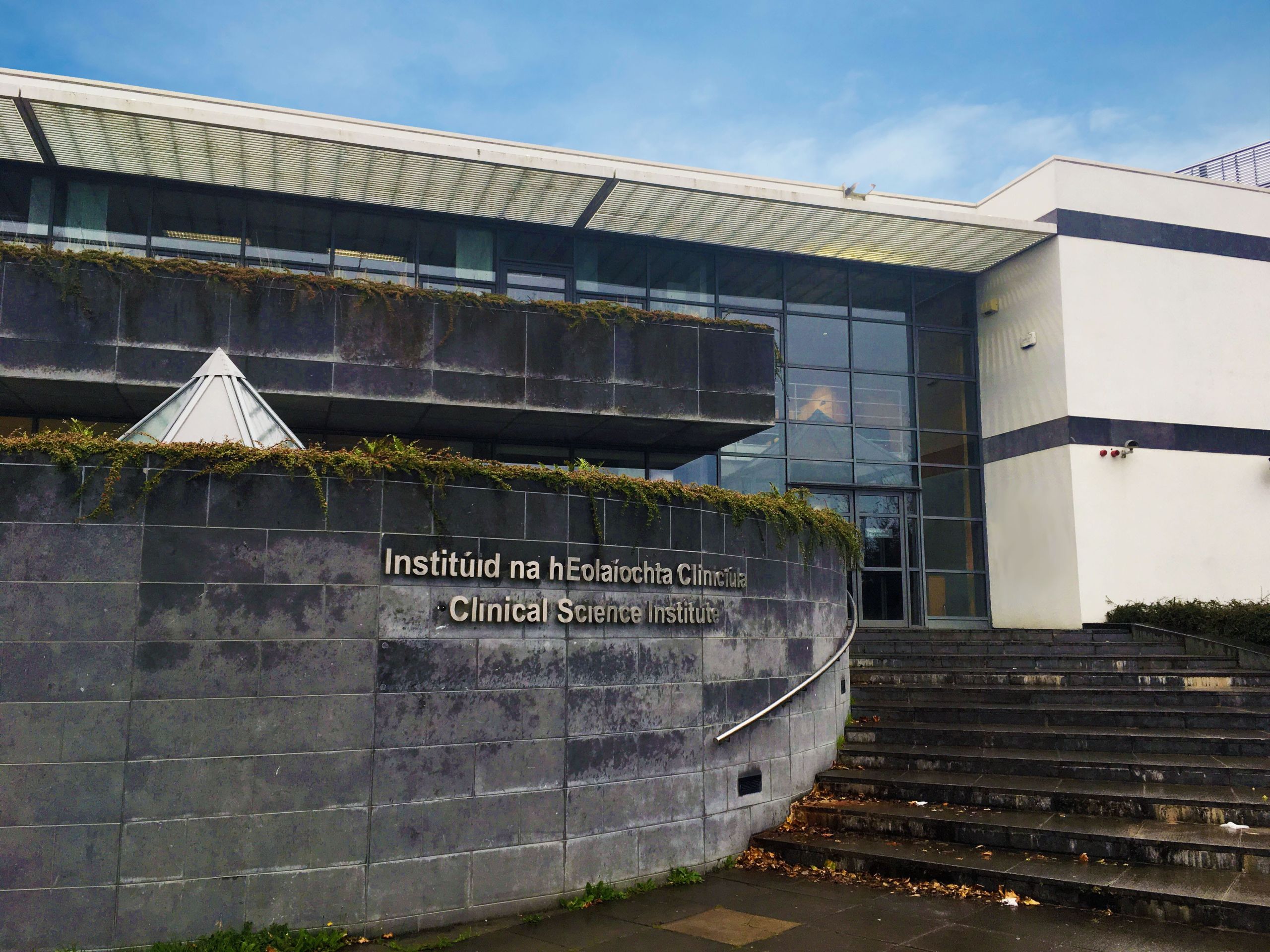
The Clinical Science Institute on the grounds of University College Hospital Galway.
The Clinical Science Institute on the grounds of University College Hospital Galway.
The hospital was declared a 'teaching institution' which meant that local authority was required to provide teaching facilities as the Minister for Health might direct, and UCG was given representation on the selection boards for permanent medical staff in the hospital... linking hospital and university appointments... to the advantage of both"
Deans 1988-1998:
1988- 1994 Professor Patrick Finnegan
1994-1998 Professor B. Gerard Loftus
In 1993 a Breast Cancer research programme was established by Professor Fred Given. Today the National Breast Cancer Research Institute is based at the Lambe Institute for Translational Research. This is a national charity that funds a comprehensive research programme led by Professor Michael Kerin.
In 1995 the Department of General Practice was established with Professor Andrew Murphy as foundation Professor.
From 2001 to the present- NUI Galway and Saolta University Health Care Group committ to the creative of several academic clinical posts in a partnership model.
In 2003 the College added the Discipline of Occupational Therapy and the Discipline of Speech and Language Therapy to expand the educational offerings and research in the School of Health Sciences.
Deans 1998-2014:
1998-2006 Dr. P. A. Carney
2006-2014 Professor B. Gerard Loftus
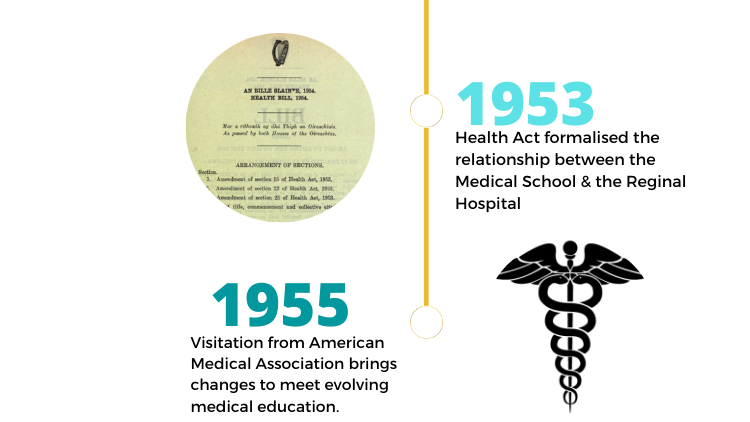
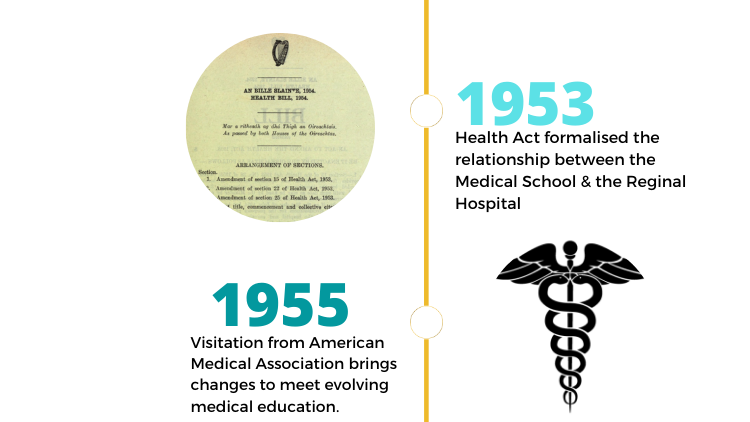
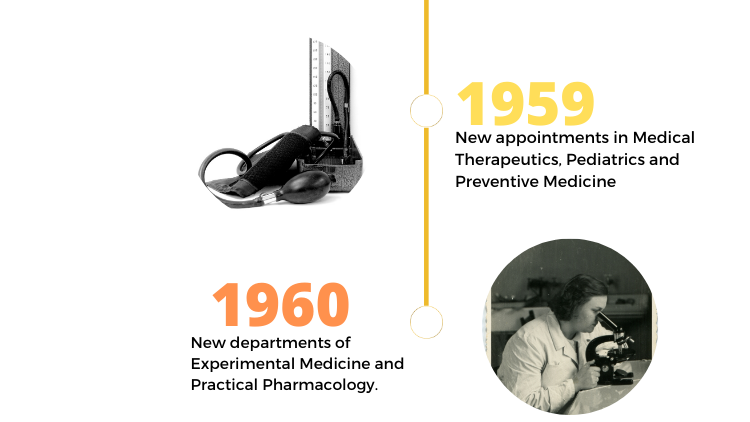
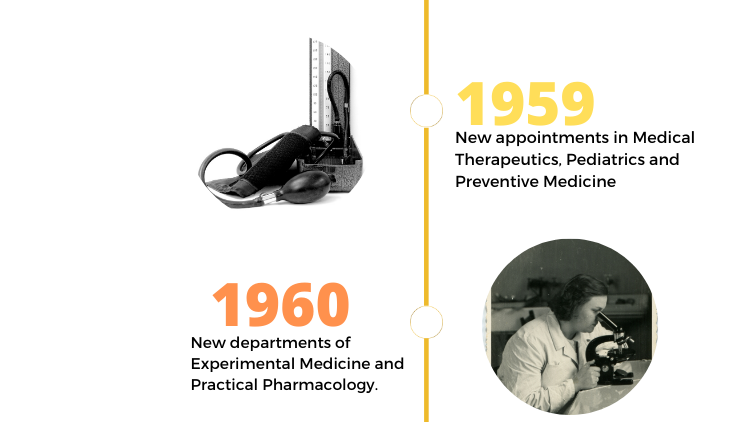
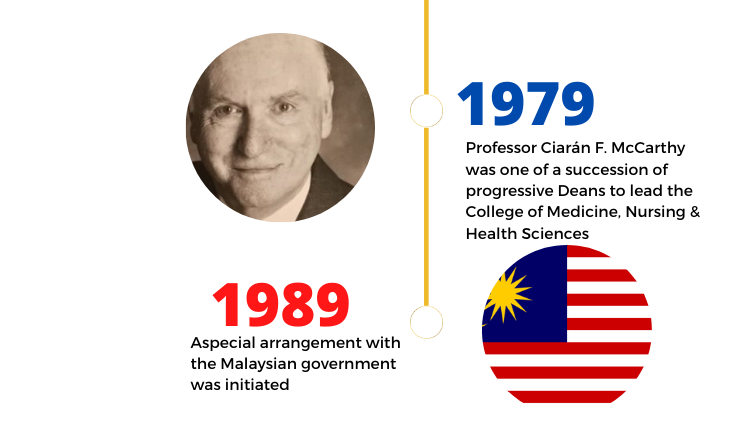
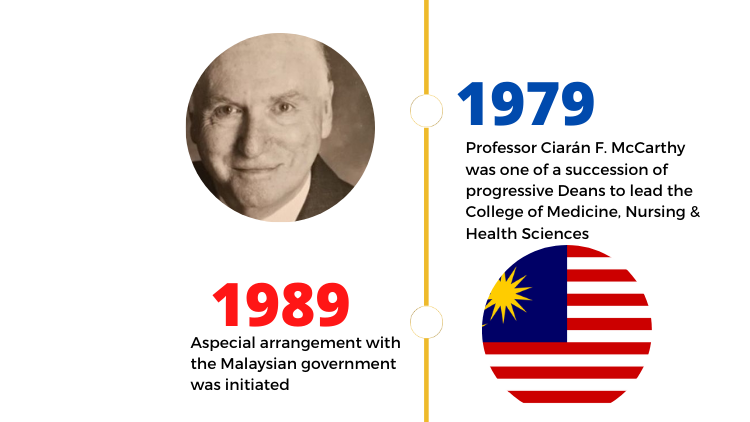
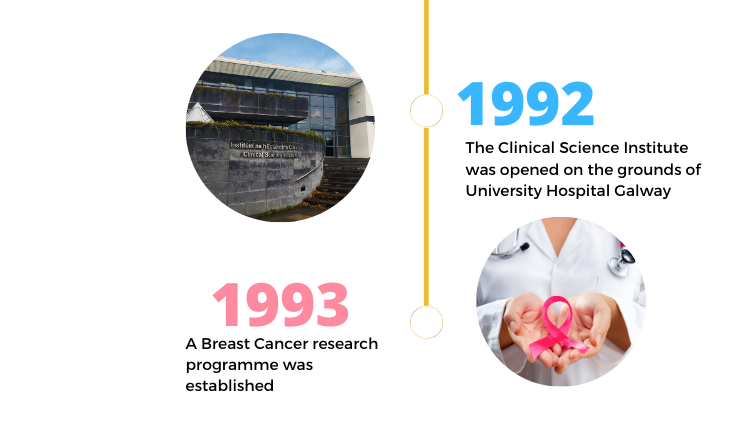
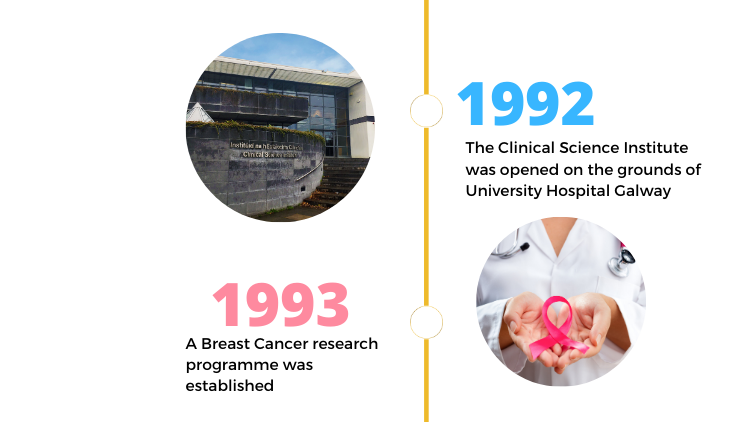
In 2004 the Regenerative Medicine Institute, REMEDI was established. REMEDI is a world-class biomedical research centre focusing on gene therapy and stem cell research, a partnership involving scientists, clinicians, and engineers in academic centres and in industry. Researchers at REMEDI work together to combine the technologies of gene therapy and adult stem cell therapy with the aim of regeneration and repair of tissues.
In 2006 The Corrib Medical Network was established. This is a core group of graduates, faculty and friends of the College of Medicine, Nursing & Health Sciences dedicated to supporting the advancement of medical research and education at NUI Galway. The network operates on the goodwill and support of its members to achieve the highest aspirations in terms of clinical and translational research as well as the development of state-of-the-art educational buildings and cutting edge research spaces.
In 2008 the HRB Clinical Research Faciltity saw a new joint venture between Galway University Hospitals, the Health Research Board and NUI Galway created the infrastructure, physical space, facilities, expertise and culture to support patient-focused clinical research and clinical trials. This joint venture aimed to understand a range of diseases and translate research into advances in patient care.
2008 also marked the year when the Discipline of Podiatry was established in close partnership with the Health Services Executive, and has a home within the School of Health Sciences.
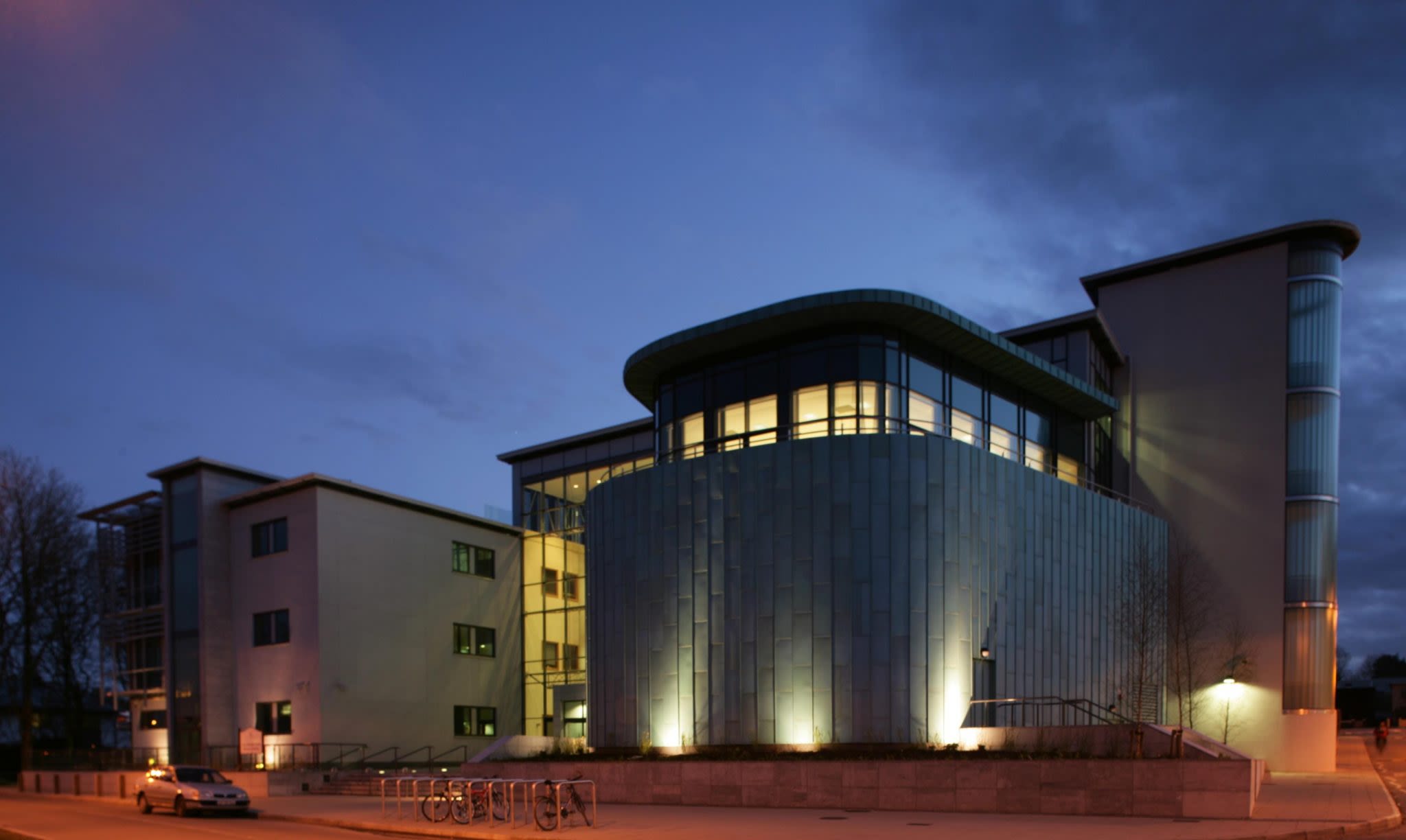
Áras Moyola
Áras Moyola
In 2009 Áras Moyola opened. This purpose-built state-of-the-art facility brings together Nursing and Midwifery, Speech and Language Therapy, Occupational Therapy and Political Science and Sociology into one dedicated space. The building has large scale clinical teaching and skills laboratories.
In 2013 the Alliance of NUI Galway and University of Limerick opens the first Medical Academy at Portiuncula Hospital in Ballinasloe.
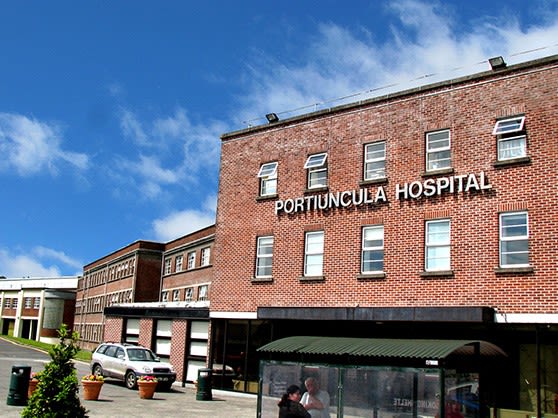
In the same year the Centre for Cell Manufacturing Ireland, based on the University campus, received a licence to manufacture human stem cells for clinical administration. It was the first facility on the island of Ireland to receive regulatory authorisation from the Health Products Regulatory Authority (HPRA) to manufacture Advanced Therapy Medicinal Products (ATMPs). Within this custom-built centre, the CCMI team produce stem cell products that are used in human clinical trials designed to test their effectiveness in a range of life-limiting medical conditions.

In 2014, led by teams in the College of Medicine, Nursing and Health Sciences the HRB-Trials Methodology Research Network (HRB-TMRN) was established to strengthen the methodology and reporting of trials in health and social care, ensuring they become more relevant, accessible and influential for patients and other service users, practitioners, policy makers and the public.
2014 also saw the establishment of Cúram, the SFI Research Centre for Medical Devices. This is a world-class research centre established with the objective of radically improving health outcomes for patients by developing implacntable medical devices.
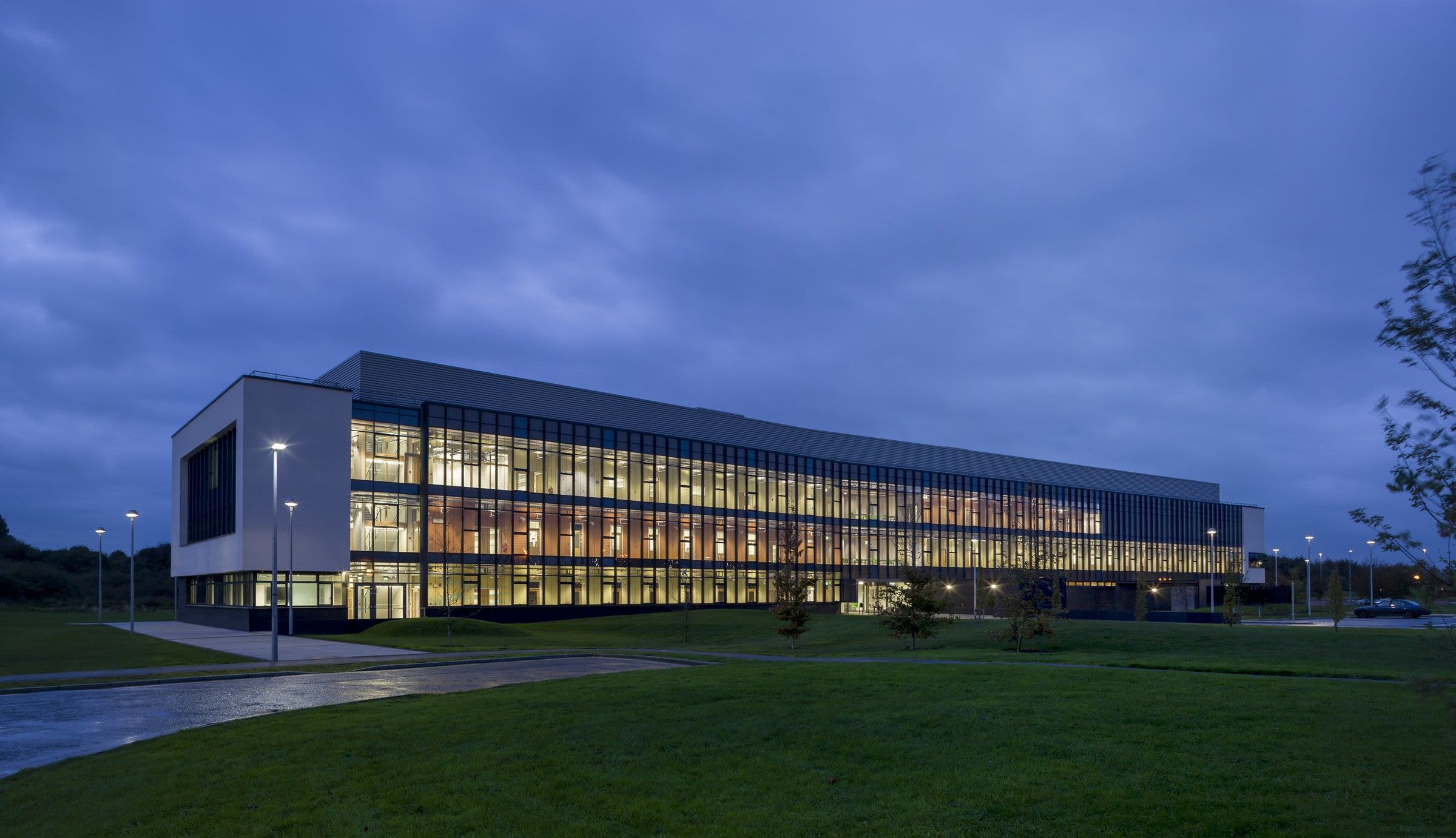
The Biosciences Building at NUI Galway North Campus
The Biosciences Building at NUI Galway North Campus
In 2014 Professor Tim O'Brien was appointed Dean of the College of Medicine, Nursing and Health Sciences. His tenure heralded a period of significant progression and change.
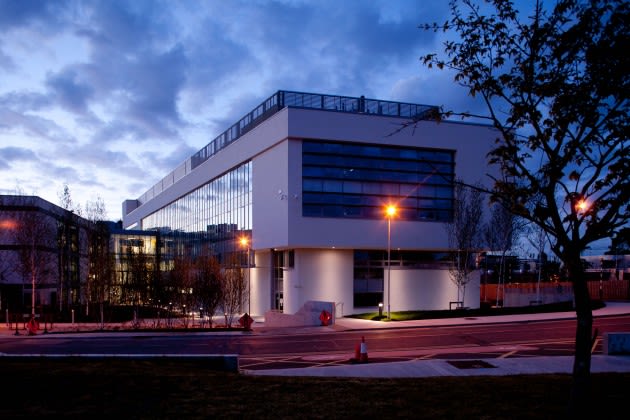
The Lambe Institute for Translational Research and the HRB Clinical Research Facility.
The Lambe Institute for Translational Research and the HRB Clinical Research Facility.
In 2015 the first clinical trial using CCMI manufactured stem cells, funded by HRB and SFI Ireland gets underway to investigate using MSCs isolated from bone marrow for the treatment of critical limb ischemmia, a common complication associated with diabetes.
2015 also saw the opening of the Lambe Institute for Translational Research and the HRB Clinical Research Facility open adjacent to the Clinical Science Institute on the grounds of University Hospital Galway. The Lambe Institute is supported by private philanthropy through Galway University Foundation and is named in recognition of the support of Dr. Ronan and Ann Lambe.
The Mayo Medical Academy was opened in 2015. Followed closely by the Sligo and Donegal Medical Academies in 2016. This brought together a strategic objective to expand clinical teaching into the west of Ireland to support local communities and open up placement opportunities.
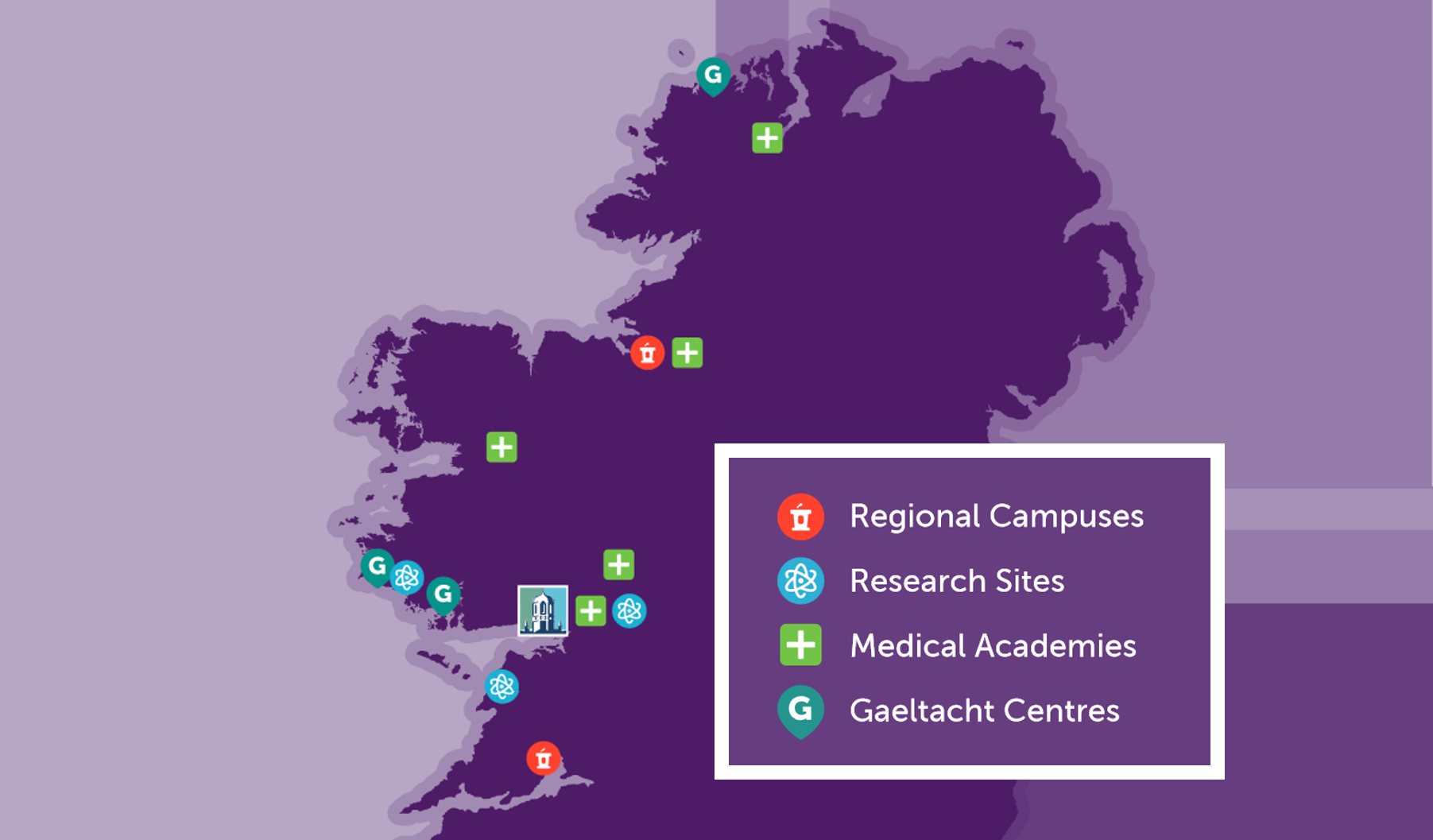
In the clinical years at NUI, Galway, students relocate from Galway to spend a full calendar year at one of our academies. Each academy has a purpose-built facility of the highest international standards of medical education, comprising lecture halls, tutorial rooms, clinical skills labs and student chat/social spaces. These academy buildings are located on Saolta University Hospital sites, ensuring ease of access from the hospital to teaching and learning facilities. Small student numbers enhance teaching and mentoring from clinical staff and facilitate patient contact.
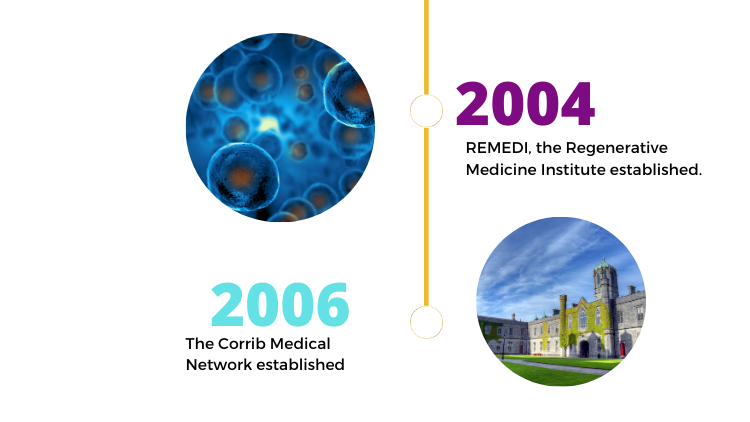
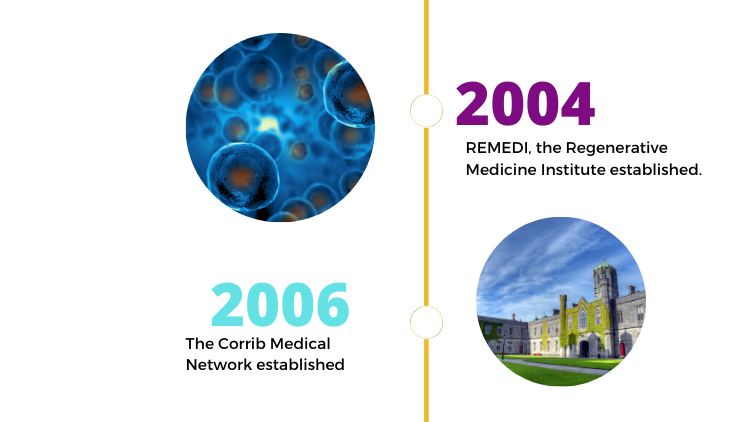
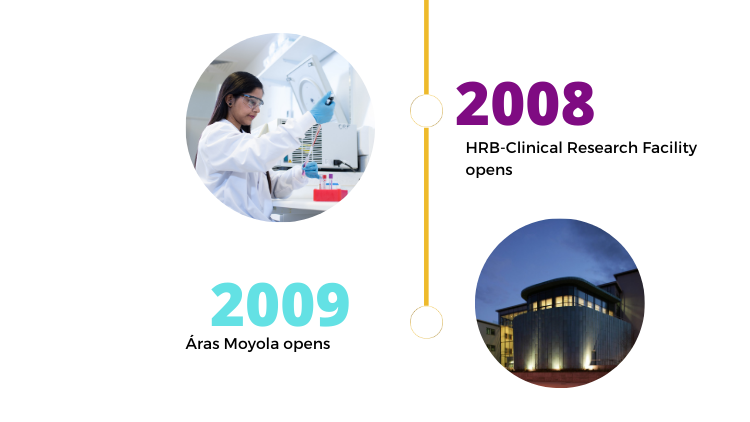
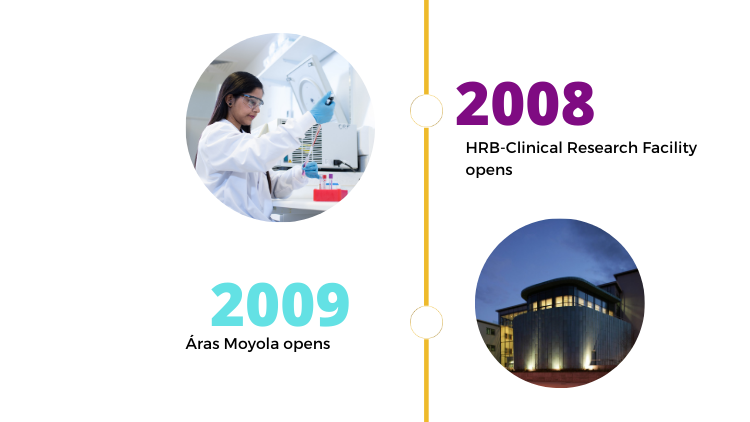
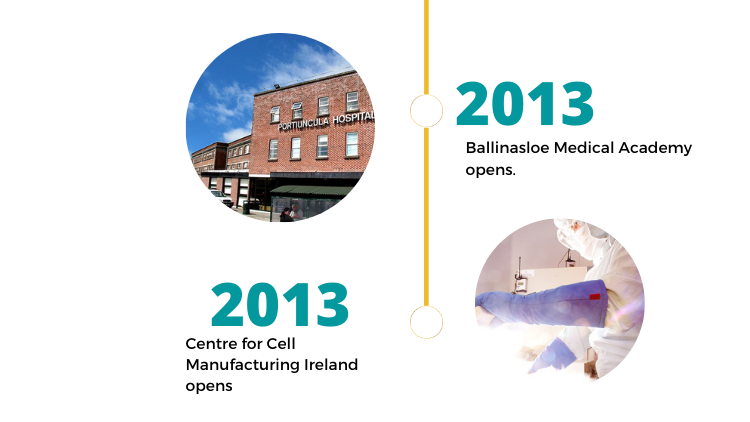
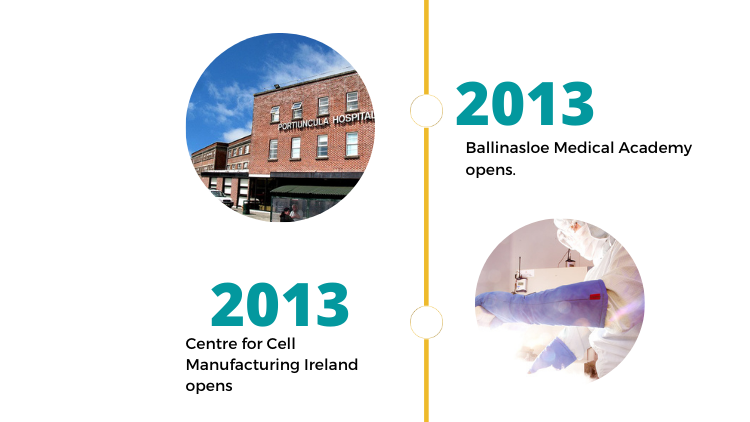
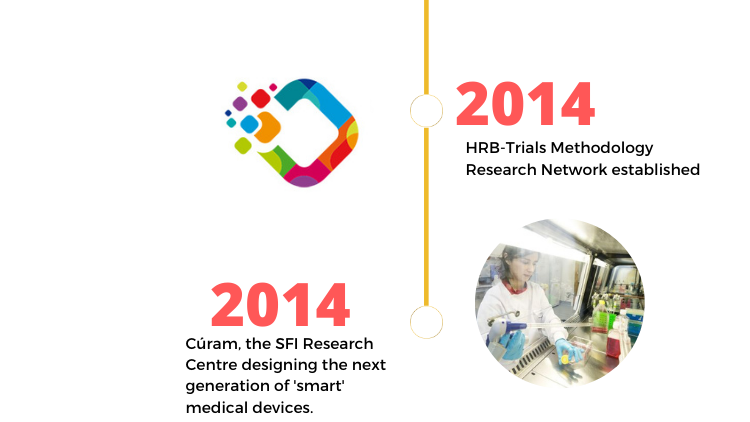
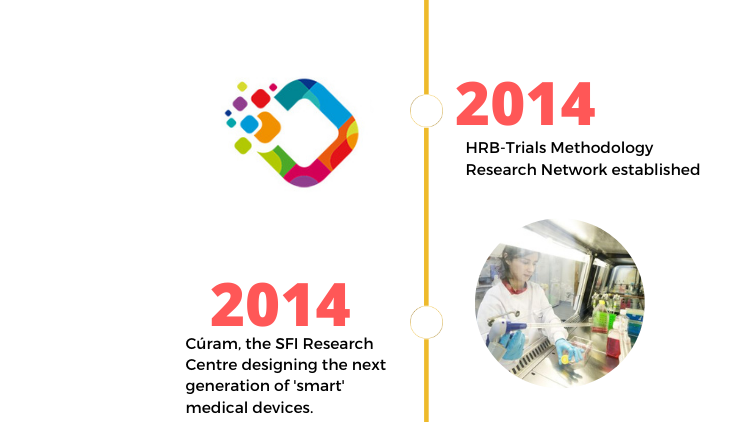
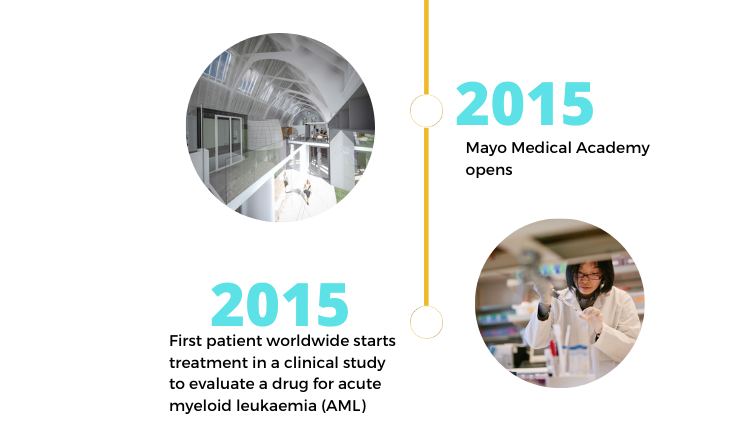
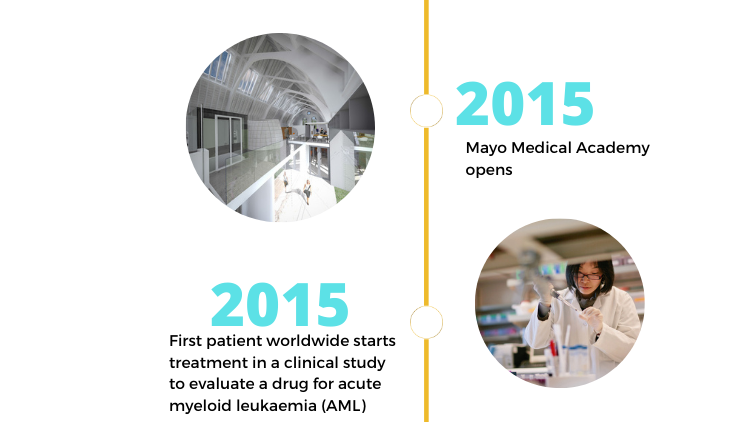
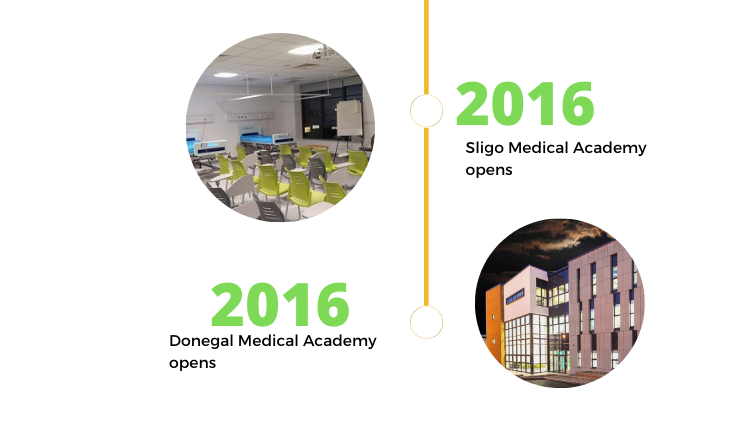
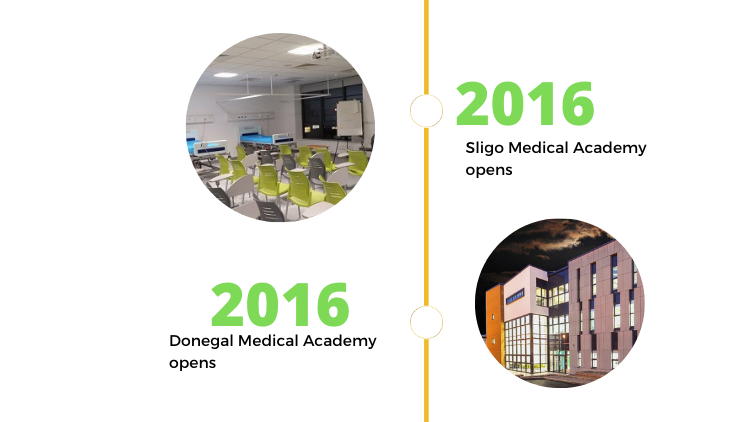
2018- Present Medicine in the Modern Era
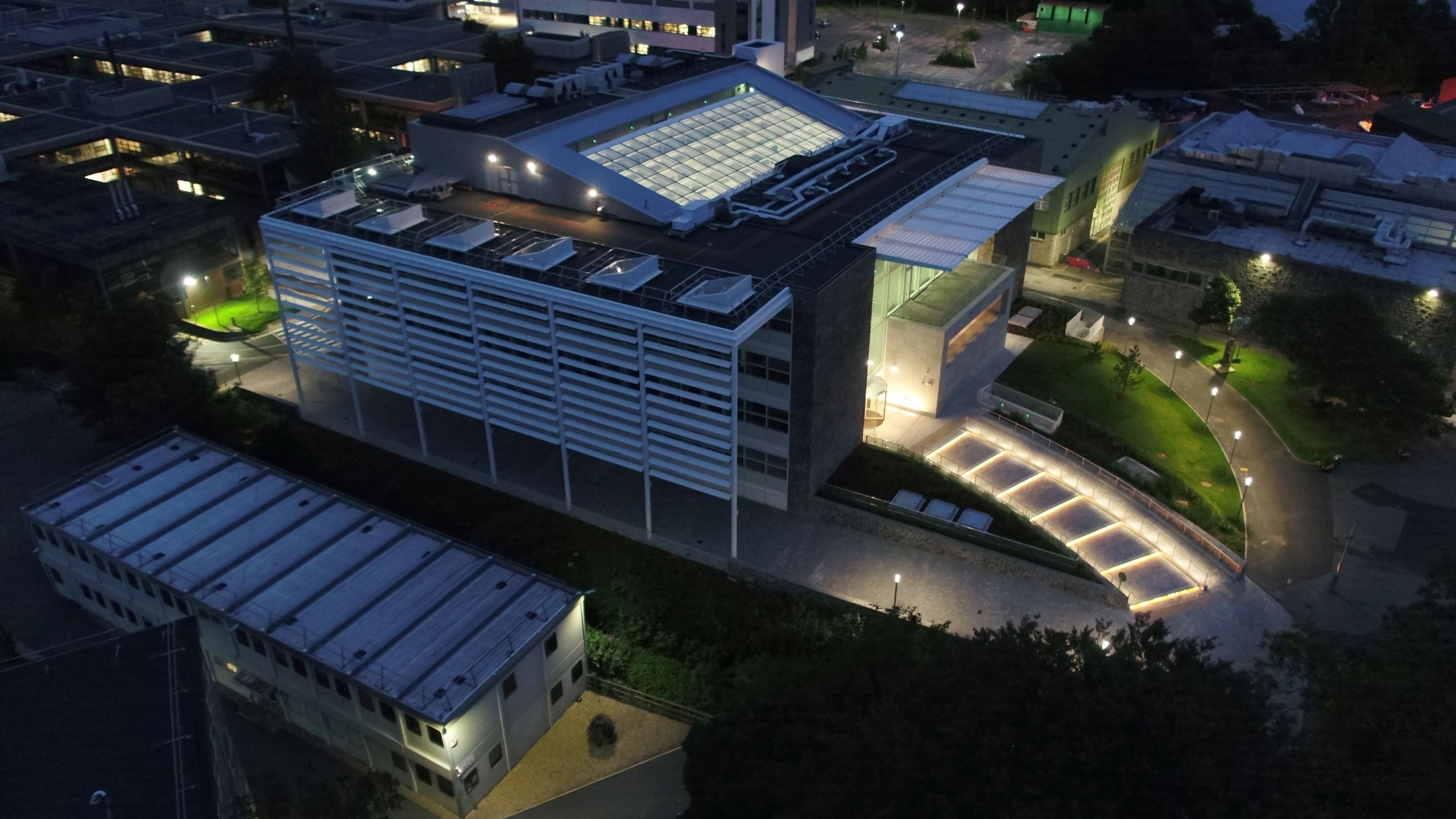
An aerial view of the Human Biology Building
An aerial view of the Human Biology Building
In 2018 the new purpose-built Human Biology Building was opened by Minister for Health Simon Harris. The construction of this €34m facility, spanning five stories and 8,200 sq m, was funded by the Higher Education Authority and sees the consolidation of the Disciplines of Anatomy, Physiology, Pharmacology and Therapeutics.
A timelapse during the construction of the Human Biology Building, a new home for Anatomy, Physiology and Pharmacology at NUI Galway.
A timelapse during the construction of the Human Biology Building, a new home for Anatomy, Physiology and Pharmacology at NUI Galway.
Home to both undergraduate and postgraduate teaching, the centre houses academics in the areas of science, engineering and medicine. It connects the university’s cluster of biomedical research groups in areas such as regenerative medicine and stem cell research, neuroscience and pain research, cancer biology, and biomechanics and biomaterials.
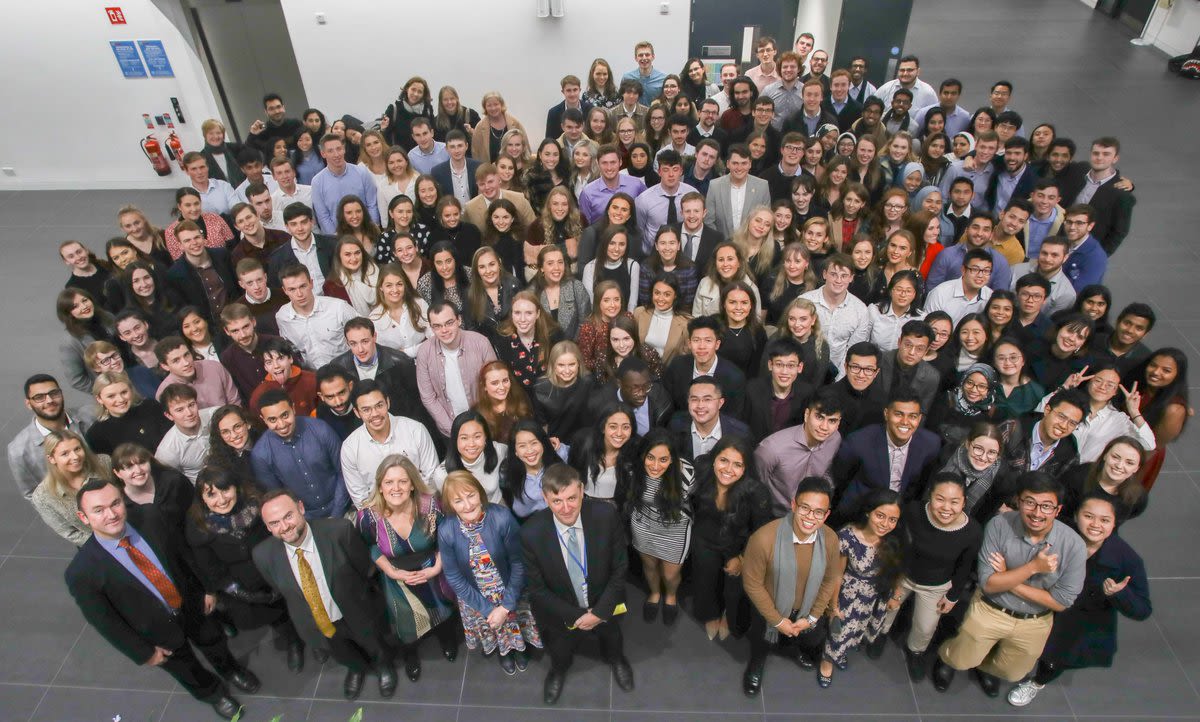
Class photo taken in the Human Biology Building.
Class photo taken in the Human Biology Building.
Medtech and medical device technologies design and discovery are at the heart of research at the College
2020- COVID 19 - a global pandemic. The College rises to the challenges.

The College of Medicine, Nursing and Health Sciences exists for the public good. As a research community with a strong sense of purpose the College mobilised capabilities in the face of a global pandemic in 2020. At the heart of motivation was improving the lives of all people. Now, more than ever across the College, teams showed their calibre in collaborating with hospitals locally, and around the world. As a College globally renowned for creativity and as a global medtech hub, we have been at the fore in responding to some of the pandemics biggest challenges to support the response to the crisis, including planning for future pandemics.
In 2021 the PPI Ignite Network was launched.
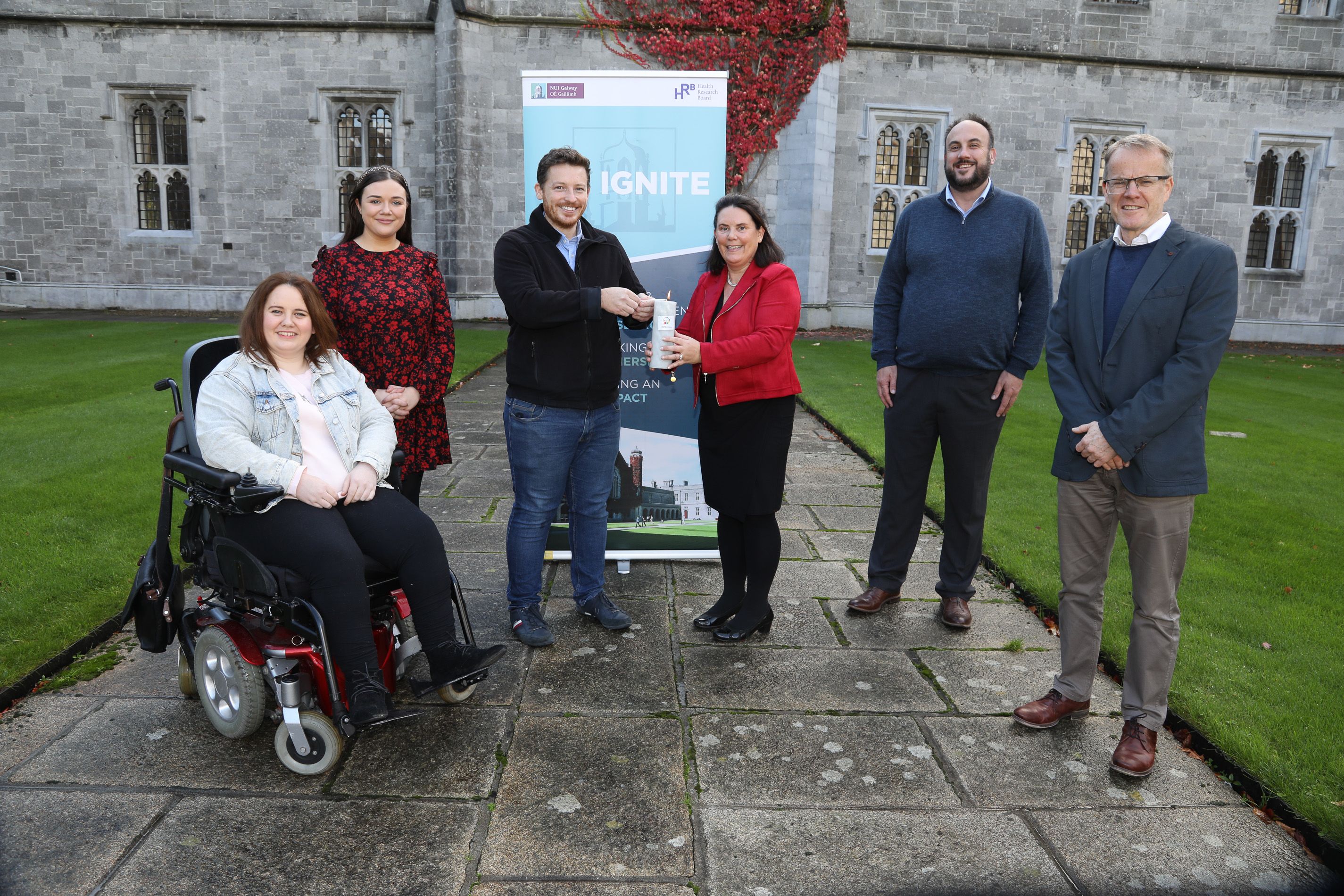
This is a significant milestone for research, for public and patients and for carers- a new national collaborative initiative putting patients at the centre of decision-making in research.
